Best solar viewing gear 2025: Observe partial and total eclipses in safety
You could save on these certified eclipse glasses, telescopes, binoculars and filters.

- Solar eclipse gear deals 2025
- Quick list
- DayStar Solar Glasses
- Celestron Solar Glasses
- Celestron Solar Telescope
- iOptron Solar Telescope
- Celestron 10x25 Solar Binoculars
- Celestron 12x50 Solar Binoculars
- Baader Solar Filter
- Celestron Solar Filter
- Hoya Telescope Solar Filter
- Best solar viewing equipment FAQs
- How we test
- Update log
Solar eclipses are one of the most exciting natural phenomena you can witness, and there will be several opportunities to catch a glimpse of one over the next couple of years.
Solar filters come in a range of different options. You can buy some basic solar eclipse glasses, or you can opt for a dedicated solar telescope or solar binoculars to get an even closer look at the eclipse. Solar filters can also be attached to any cameras or telescopes you might already own. It's important to choose a product that meets the ISO 12312-2 safety standard, which ensures that no more than 0.0032% of the sun's dangerous rays meet your eyes. If something isn't marked as ISO-certified, then it isn't guaranteed to keep your eyes safe when watching a solar eclipse. Read on to find out our top-recommended products across all solar filter categories.
If you're interested in catching the next lunar eclipse or you're looking to upgrade your general skywatching gear, we also have guides to the best telescopes and best binoculars to get you started. And if you're looking for the best equipment for recording your observations, we also have guides to the best cameras and best lenses for astrophotography.
Solar eclipse gear deals 2025
- Amazon: Celestron solar eclipse glasses
- Target: Discounted solar eclipse glasses
- Best Buy: Solar glasses, viewers, telescopes and binoculars
- B&H Photo Video: Binoculars, glasses and telescopes
- Adorama: Discounted solar eclipse glasses, binoculars and filters
The quick list
Here's a quick look at the products listed in this guide. To read more about a product, click on the picture or the 'read more below' button, and you'll see a more in-depth look.

In this kit, you'll get five pairs of solar viewing glasses as well as two 50mm universal lens filters, suitable for binoculars and camera lenses. They're well-suited for anyone keen to witness solar events, from beginners to more advanced astronomers.

Giving more magnification than standard solar glasses, the Celestron EclipSmart 2x Power Viewers are affordable, give good solar views and are safe to use.

A refractor telescope with a permanently fixed solar filter, the Celestron EclipSmart Travel Solar Scope 50 is an affordable way to view solar eclipses and the sun's surface.
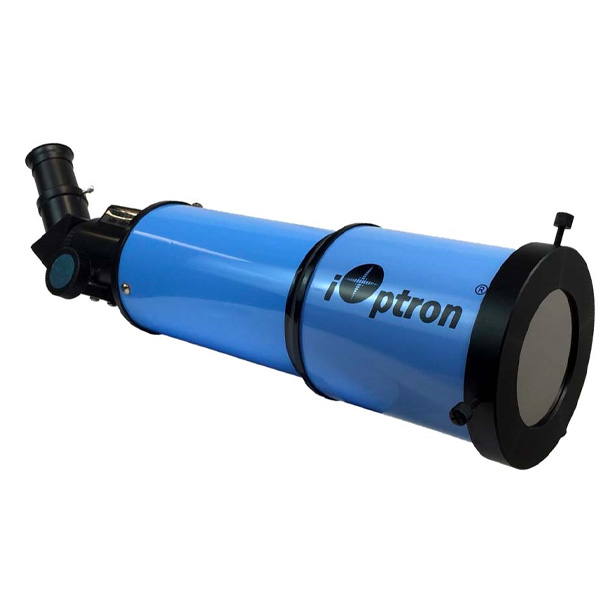
A great all-rounder for solar, nighttime and terrestrial viewing, this offering from iOptron has a detachable solar filter.
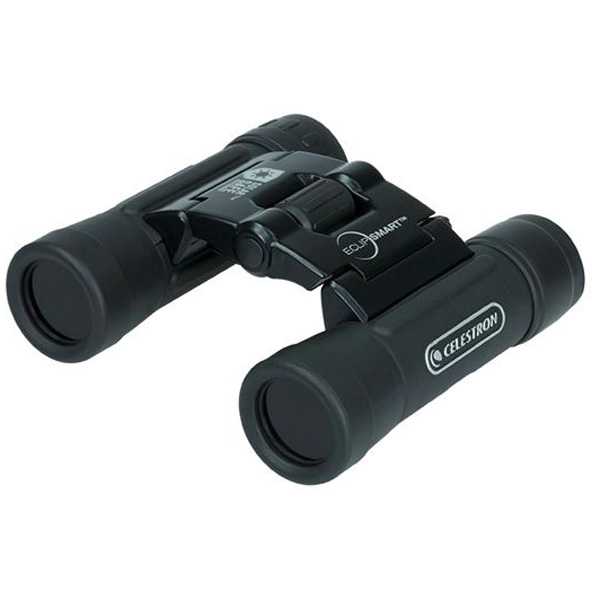
A great step up from solar glasses, these solar binos are affordable, compact and easy to use to track the sun's movement across the sky.
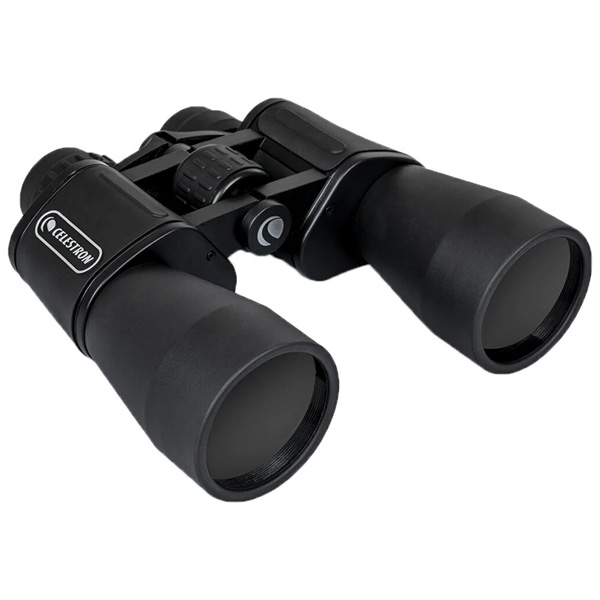
If you want the best solar binoculars, these are your best bet. They're big and heavy so best used on a tripod, but you'll get incredibly close-up and detailed views.
Load the next 3 products ↴
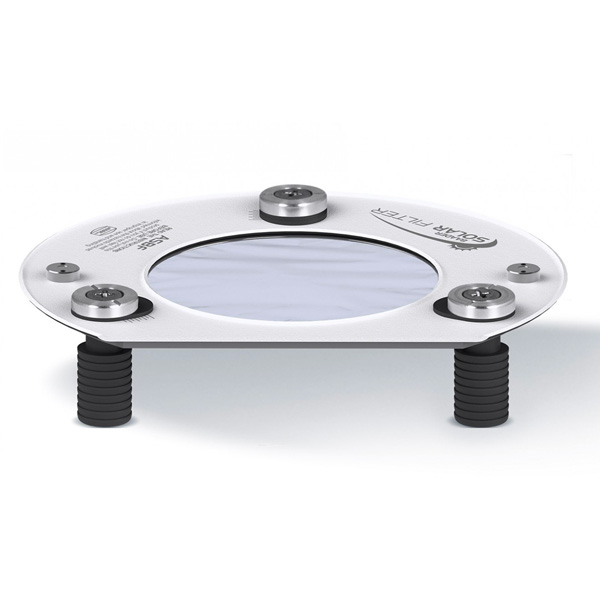
White light filter designed to clamp onto binoculars, camera lenses and monoculars, this filter is well built and provides great views of the sun.
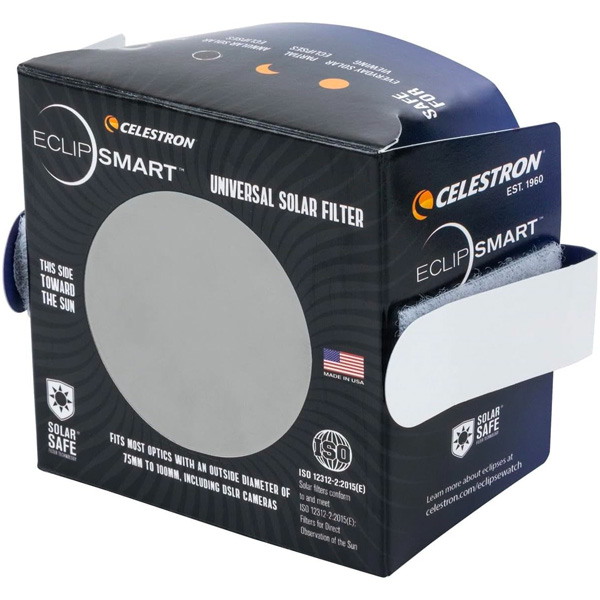
A cheap and cheerful solar filter to attach to your telescope, camera lens or spotting scope for easy solar viewing, but it's not designed to last forever.
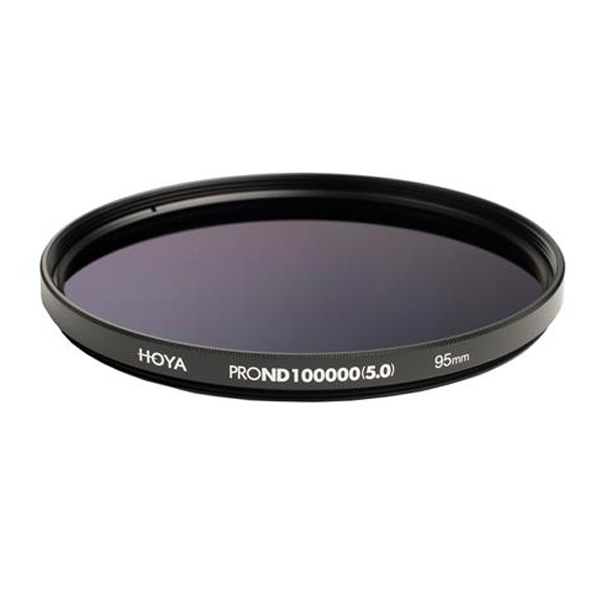
Made specifically for solar photography, this filter can screw onto the front of camera lenses and telescopes, although it doesn't claim to block any of the harmful rays.
The best solar viewing equipment we recommend in 2024
Why you can trust Space.com
Solar Glasses
DayStar Solar Glasses & Filter Kit
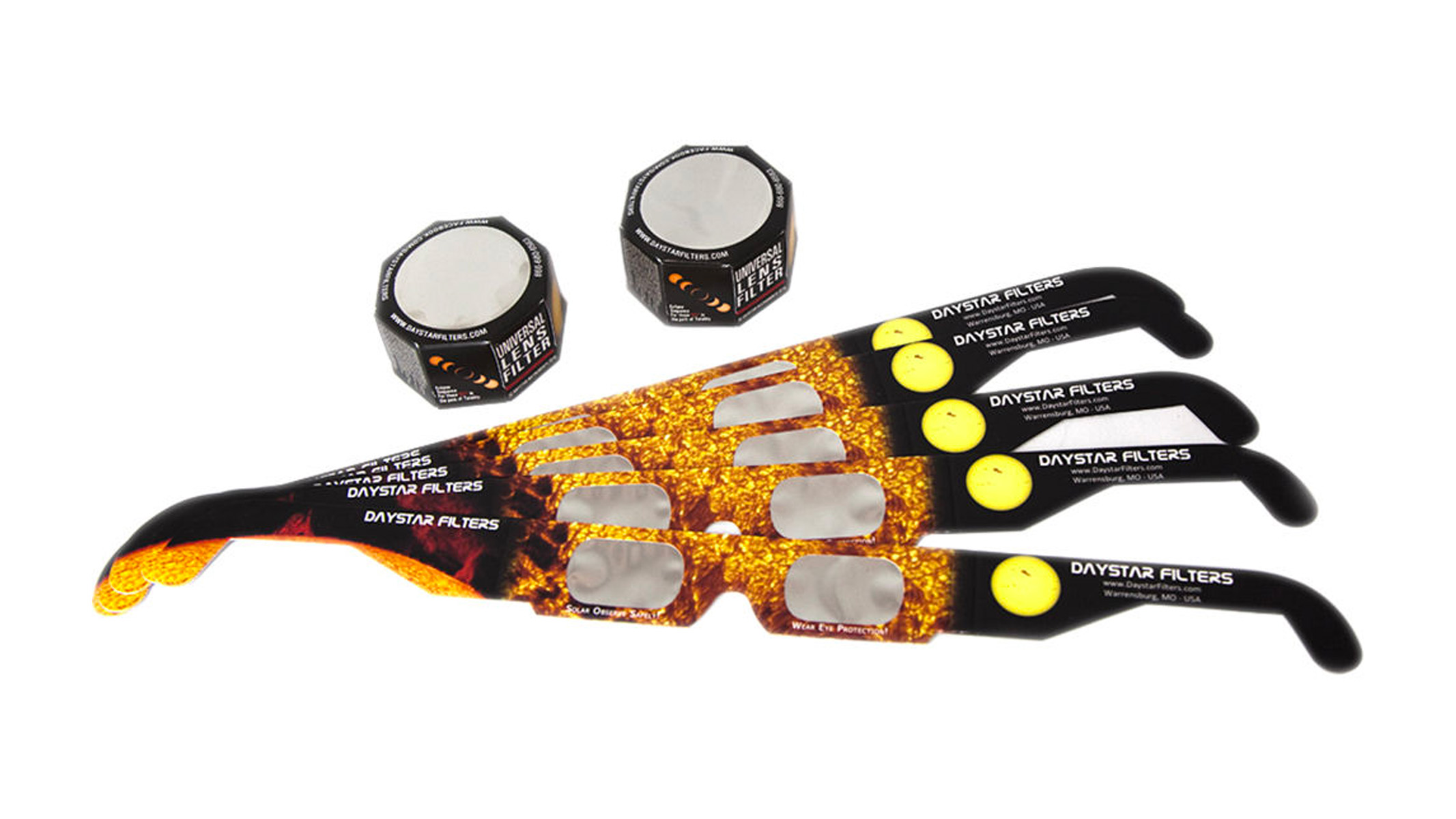
DayStar Solar Glasses Kit
Our expert review:
Specifications
Reasons to buy
Reasons to avoid
✅ You want something affordable: These solar glasses and binocular filters are super budget-friendly.
✅ The whole family wants to see solar events: For solar eclipses, this pack of 5 solar glasses means everyone can safely view the event simultaneously.
❌ You want something built to last: They're good quality for what they are, but solar glasses made from card aren't going to last forever.
❌ You want to do a lot of solar viewing: For more experienced astronomers, a solar telescope or dedicated binoculars might be more suitable.
🔎 DayStar Solar Glasses Kit: Easy on the wallet and user-friendly, this kit of solar glasses and filters is great for beginners who want to view specific solar events like eclipses. ★★★★
DayStar Filters' eclipse glasses and solar filters are an excellent choice for safely watching solar events like eclipses and seeing sunspots. With a design that puts safety and clear vision first, they're a fantastic choice for the whole family to use easily.
The eclipse glasses feature high-quality solarite film that meets the ISO 12312-2 international safety standards, ensuring that your eyes are protected from harmful solar radiation during observation and keeps out 99.999% of intense light and 100% of harmful UV — ideal for viewing and photographing the sun, safely.
The design incorporates a comfortable and lightweight frame, making them easy to wear for extended periods without discomfort. The frames are also made of card stock with two creases that allow the user to customize them to fit different face shapes and sizes accordingly, making them a good option for younger skywatchers.
They're well-suited for anyone keen to witness solar events, from beginners to more advanced astronomers. In this kit, you'll get five pairs of solar viewing glasses and two 50mm universal lens filters, suitable for binoculars and camera lenses. We think they're a great option to get your kids interested in viewing solar events (with adult supervision, of course), and you don't have to worry about them mishandling more expensive equipment like telescopes or binoculars.
Attributes | Notes |
|---|---|
Design | Made from high-quality solarite film and can be customized to fit different face widths. |
Performance | Keeps out 99.999% of intense light and 100% of harmful UV and IR. |
Functionality | 50mm filters can fit onto binoculars and camera lenses. |
Celestron EclipSmart 2x Power Viewers
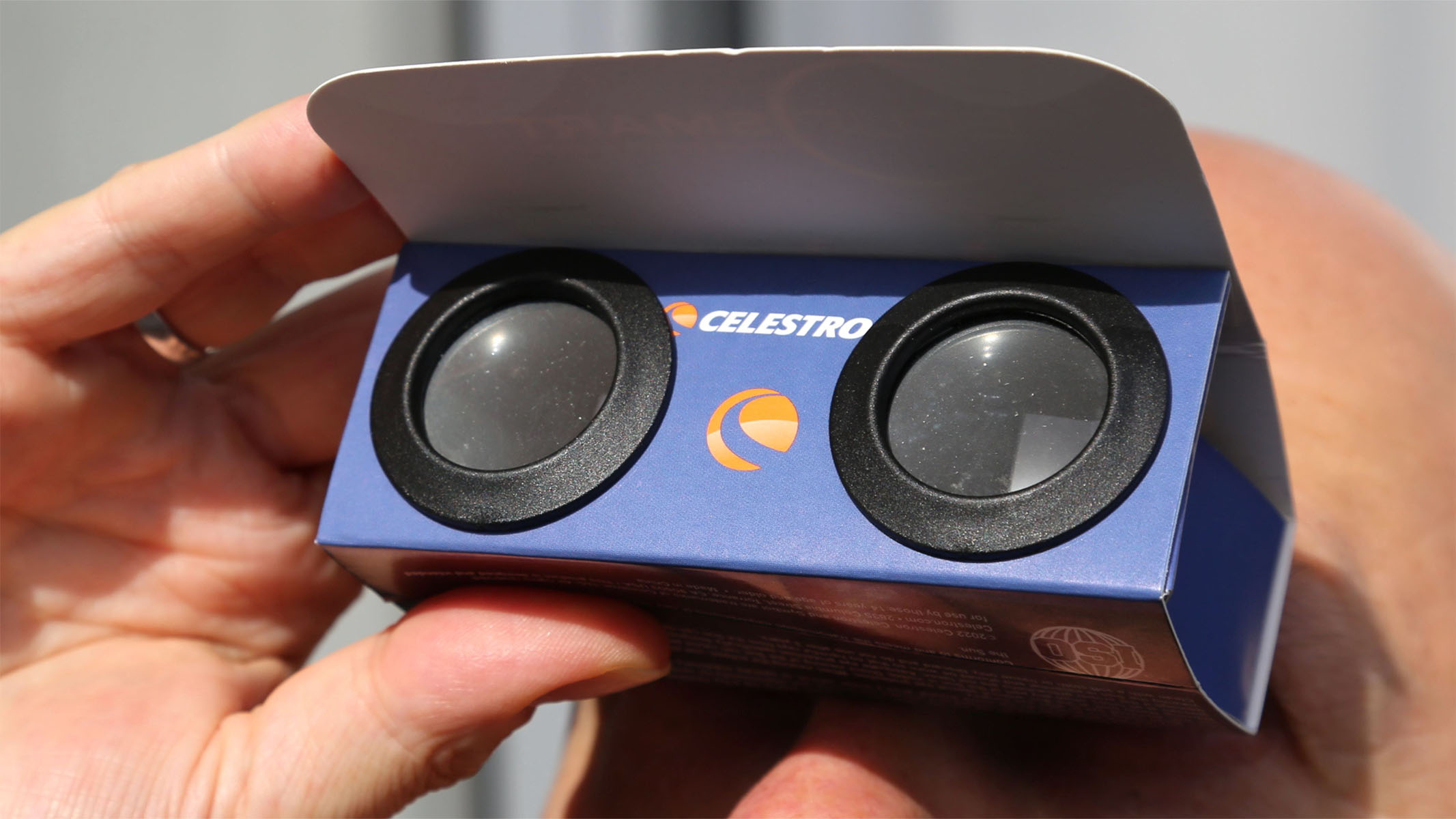

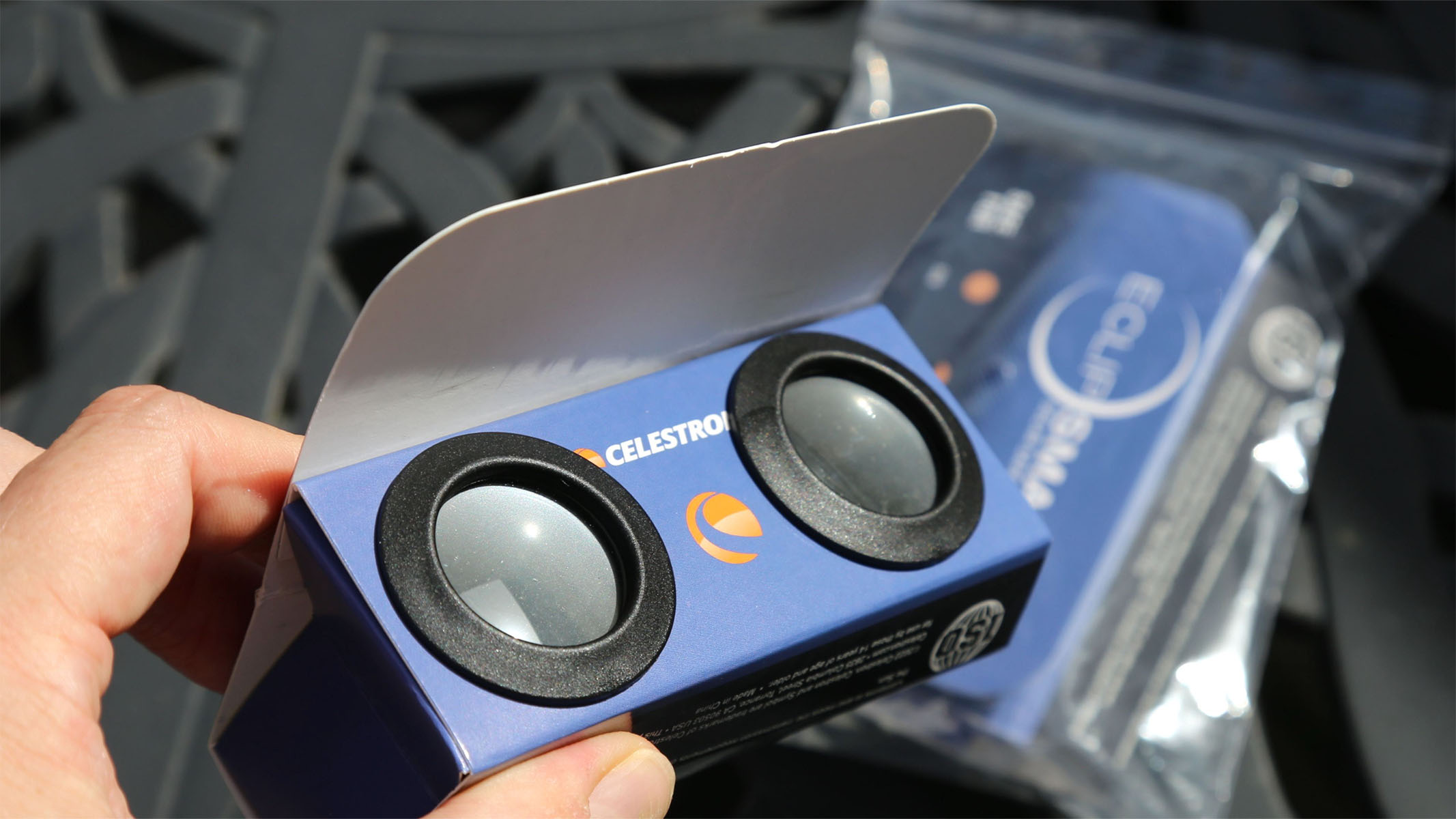
Specifications
Reasons to buy
Reasons to avoid
✅ You want a step up from regular solar glasses: The Power Viewers have 2x magnification for those wanting a closer look at the sun.
✅ You're on a budget: They are incredibly affordable.
❌ You want dedicated binoculars: While they do a great job, they won't be as detailed as special solar binoculars.
❌ You want to view sunspots: We found that sunspots weren't very visible when using them.
🔎 A fantastic step up from regular solar glasses, the Celestron Eclipsmart 2x Power Viewers give 2x magnification for those wanting to fly closer to the sun. ★★★★★
If you're looking for something a little more advanced than regular solar glasses, these Celestron Eclipsmart 2x Power Viewers will be just the ticket. They're certainly suitable for beginners, but their 2x magnification will be a little more pleasing to more experienced astronomers who want a closer look.
In our full Celestron EclipSmart 2x Power Viewers review, we thought they're perfect if you want a close-up view of the sun without needing to invest in dedicated solar eclipse binoculars. They have two small lenses in front of two larger solar filters and comply with ISO 12312-2. These lenses are made of the same polymer material, so the sun appears orange instead of white like many other solar glasses, and you can just about see faint sunspots and wispy clouds on the sun's surface. The only thing to watch out for is double vision, as you can't adjust the distance between the lenses. But overall, we thought they gave a great view.
With the Celestron EclipSmart 2x Power Viewers Solar Eclipse Observing Kit, you'll find a sturdy, foldout map inside the box. It's laminated and durable, displaying a map of the U.S. with both parts of the eclipse marked on it. They come in a pack of two — great for using as a couple or with a friend.
If you don't want the 2x magnification or want more pairs to share around a group, Celestron also does a Solar Eclipse Glasses Viewing Kit with four pairs of regular solar glasses.
- Read our full Celestron EclipSmart 2x Power Viewers review
Attributes | Notes |
|---|---|
Design | Foldable design made from cardboard and plastic lenses. |
Performance | Orange tint makes the sun look more realistic. |
Functionality | 2x magnification gives the power of binoculars with the price of solar glasses. |
Solar Specific Telescopes
Celestron EclipSmart Travel Solar Scope 50

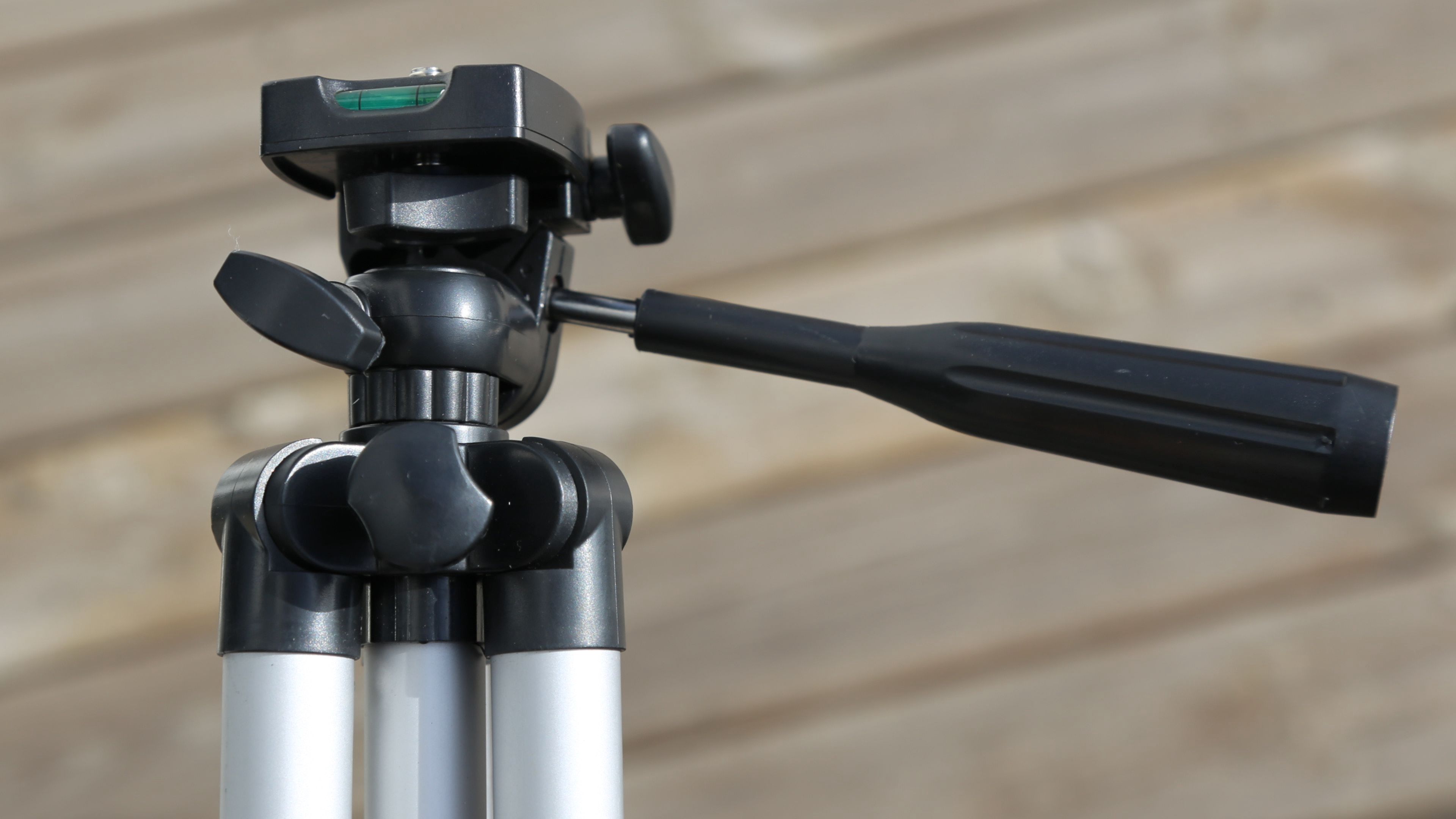
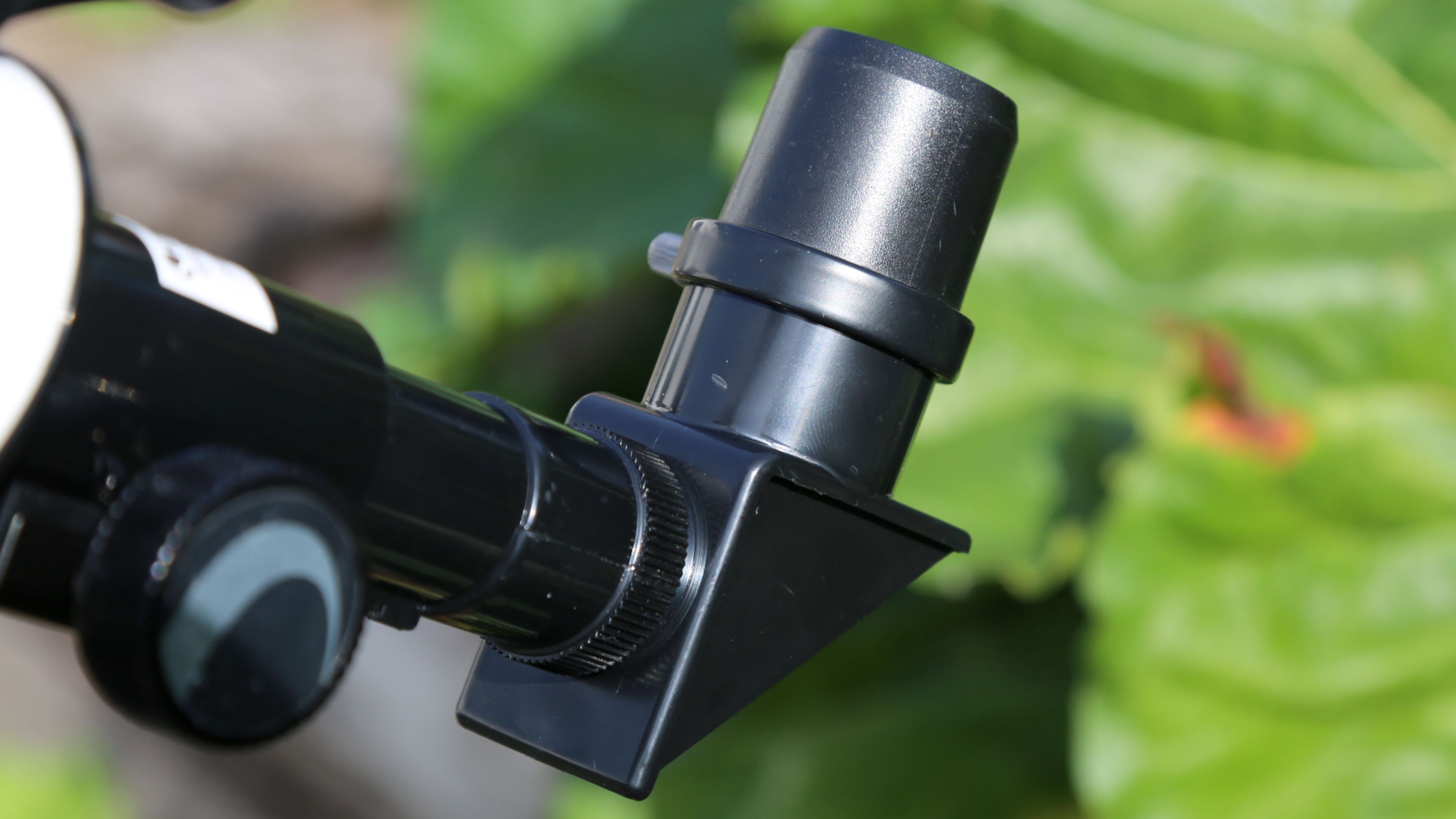



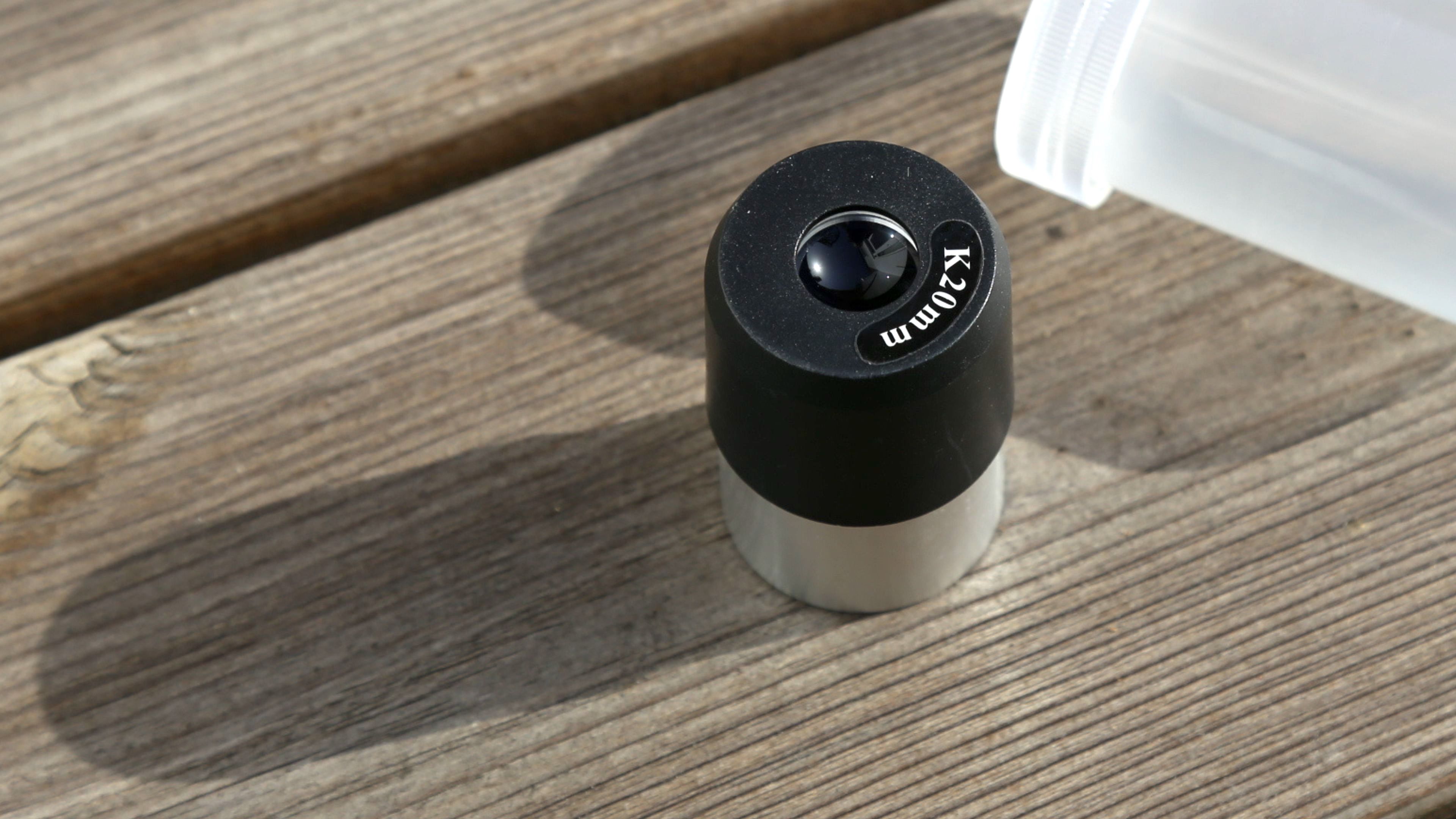
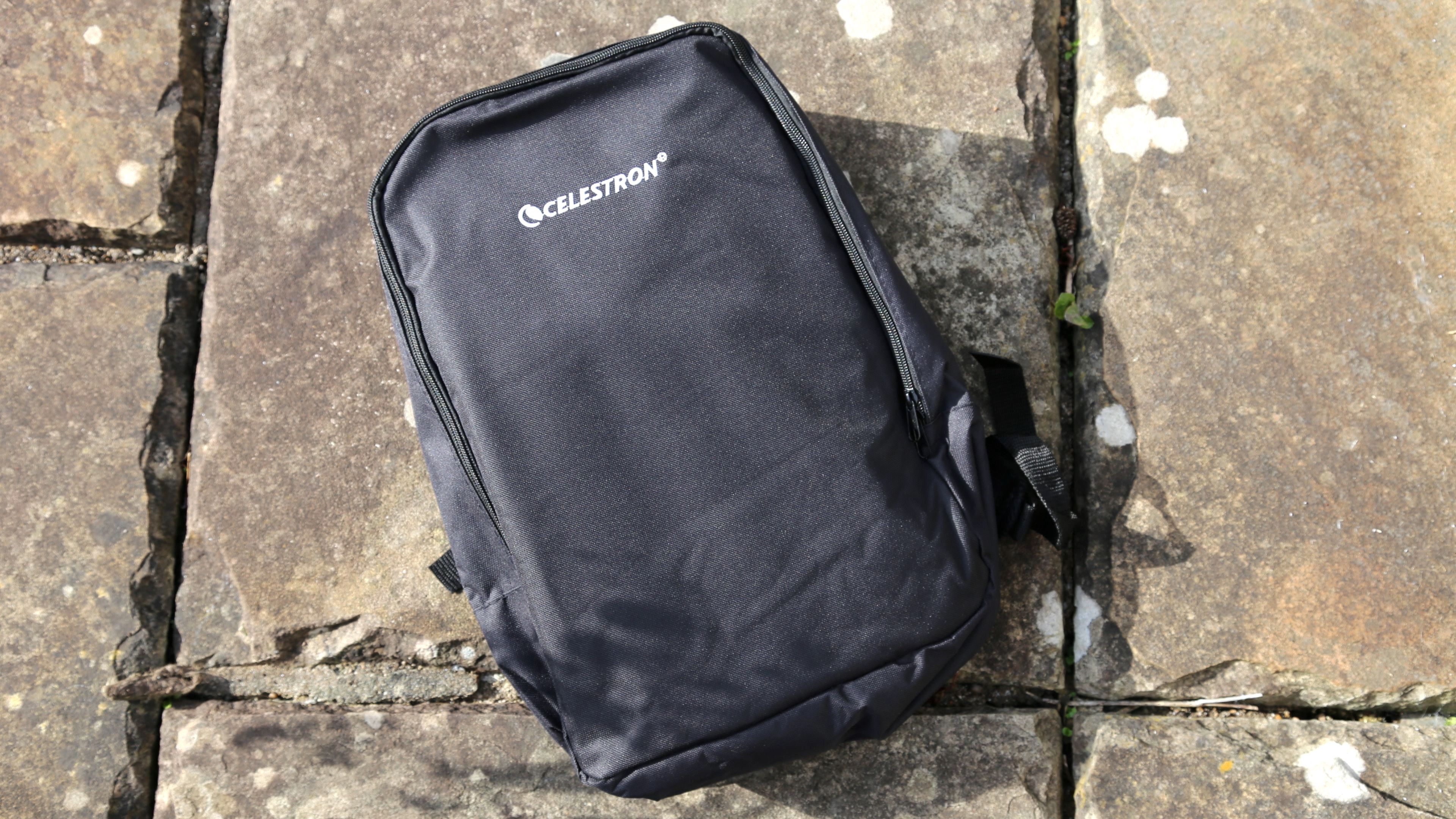
Specifications
Reasons to buy
Reasons to avoid
✅ You want to transport it: It comes with a backpack and weighs only 2 lbs / 918g, making it very easy to transport.
✅ You're on a budget: As far as telescopes go, this one is a very good price for what you get.
❌ You already have a telescope: If you already have a pretty good telescope and this feels like a downgrade, you'd be better off getting a solar filter for your current telescope.
❌ You want to use it for nighttime viewing: This telescope has a permanent solar filter fixed to the front, so you can't take it off to use it for stargazing.
🔎 A budget-friendly way to get close-ups of the sun's surface, the Celestron EclipSmart Travel Solar Scope 50 with a built-in white light filter fits the bill. Simple to set up, travel with and use, it’s ideal for observing sunsets and for solar eclipses. ★★★★
The Celestron EclipSmart Solar Telescope 50 is an ideal choice for simple and safe solar viewing. It comes with a backpack for easy transportation, plus it's portable, lightweight, cost-effective, has built-in white light filters and an excellent finderscope too. We've also reviewed the Celestron EclipSmart Solar Telescope 50 and rate it highly.
A travel-friendly solar telescope that offers up to 18x magnification, (very useful when observing sunspots), the Celestron EclipSmart Travel Solar Scope 50 has a permanent solar filter across its optics which follows the ISO 12312-2 standard, effectively blocking infrared (IR), ultraviolet (UV) and 99.99% of visible sunlight. This means you won't accidentally leave the solar filters on or off, making it a great option for kids — and adults who might forget! That said, it does restrict what this telescope can be used for. But overall, it's convenient as an all-in-one tool that doesn't need any additional accessories.
It's incredibly easy to use and can be set up in minutes, which is great news for beginners. It comes with a backpack and tripod which makes it fantastic if you're traveling to watch the eclipse, but we did find the plastic tripod to be a bit flimsy and fragile.
The 18x magnification works well for seeing sunspots and tracking an eclipse, but you need to keep the Celestron EclipSmart Travel Solar Scope 50 very steady. It's easy to manage on a calm day when placed on a solid surface, but it becomes challenging with any amount of wind. To instantly improve it, we'd recommend pairing it with one of the best tripods.
- Read our full Celestron EclipSmart Solar Telescope 50 review
Attributes | Notes |
|---|---|
Design | Shaky tripod and fragile build quality. |
Performance | Crisp images with minor fringing. |
Functionality | Easy to locate the sun. |
iOptron 80mm White Light Solar Scope

iOptron 80mm White Light Solar Scope
Our expert review:
Specifications
Reasons to buy
Reasons to avoid
✅ You want something versatile: It's a great choice for those wanting to use it for several purposes, day and night.
✅ You don't have a huge budget: There are more affordable options, but we think this one is a great choice given what it can do.
❌ You already have a telescope: If you already own a good telescope, this one likely won't measure up — you'd be better off buying a solar filter for your current scope.
❌ You want a ready-to-go scope: This one doesn't have a mount or tripod, so you'll need to source those separately.
🔎 iOptron 80mm White Light Solar Telescope: A good choice for all users, although beginners might struggle with the lack of mount and tripod. It's also good for nighttime and terrestrial viewing. ★★★★
The iOptron 80mm White Light Solar Telescope is a good choice if you want a telescope to view the sun's surface. It comes with a highly durable SolarLite white light filter, has a clear solar filter aperture of 60mm, two eyepieces, and has the highest useful magnification of an impressive 189x.
The 80mm objective lens and short 400mm focal length (f/5.0) are perfect for capturing expansive sky views, making it particularly well-suited for observing larger celestial objects.
What makes this scope stand out from the other solar telescopes on this list is that the 60mm solar filter is detachable, which provides the telescope with the versatility to use it at nighttime for stargazing as well as exploring terrestrial objects like birds and landscapes.
Not only is it great for solar viewing, but it proves to be excellent for observing objects within our solar system, providing clear views of the Moon's phases and allowing you to track the movements of planets.
Whether you're observing Saturn's majestic rings or Jupiter's moons, this telescope delivers crisp and detailed views and it excels in revealing stunning star clusters, delicate nebulas and expansive galaxies.
It doesn't have a mount or tripod included, which beginners may find daunting at first, but it means you can combine it with several different mounts and tripod options to find the right setup for you.
Attributes | Notes |
|---|---|
Design | No mount or tripod. |
Performance | Provides crisp and detailed views. |
Functionality | Detachable solar filter means you can use it for stargazing. |
Solar Specific Binoculars
Celestron EclipSmart 10x25 Solar Binoculars
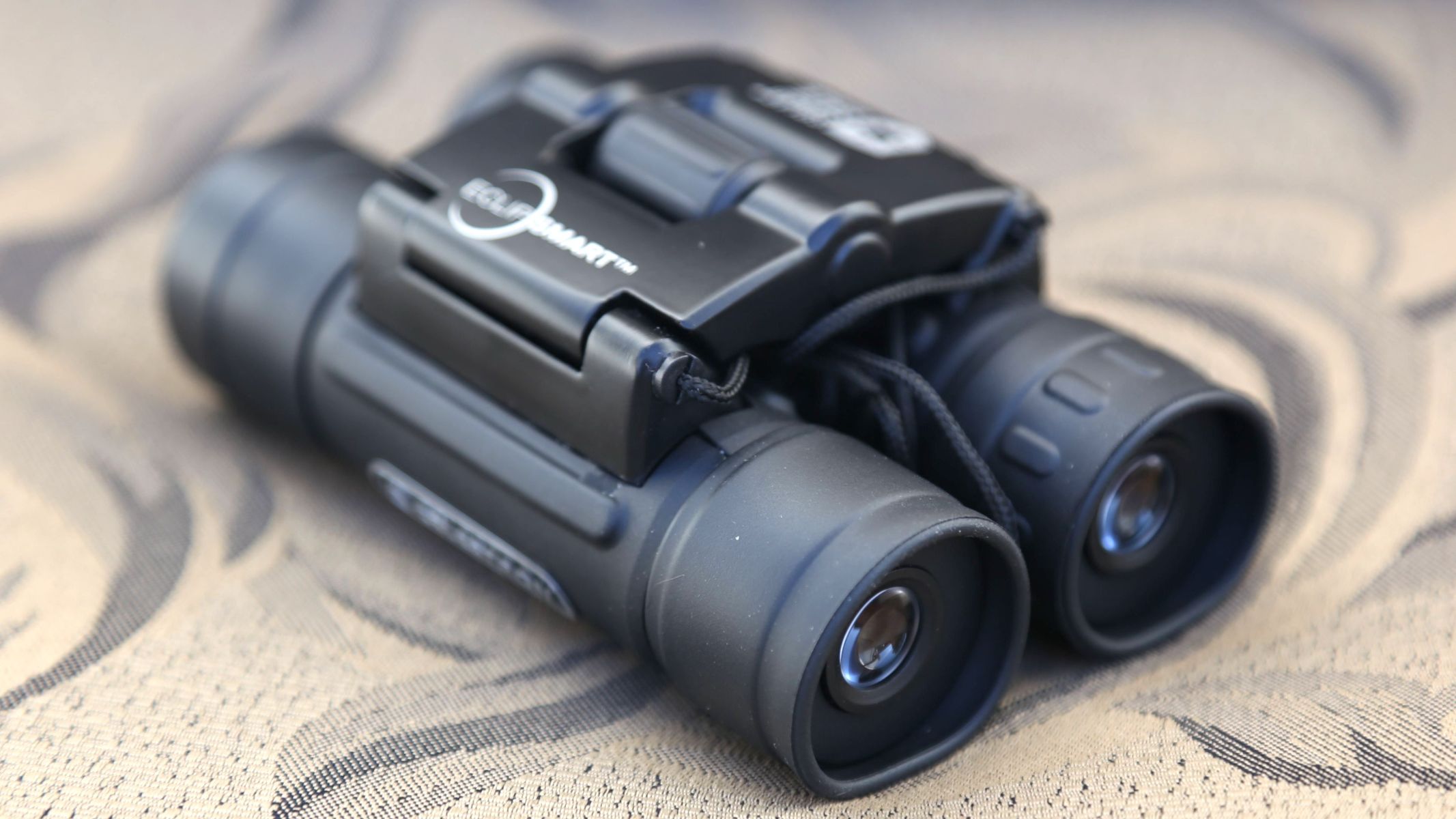
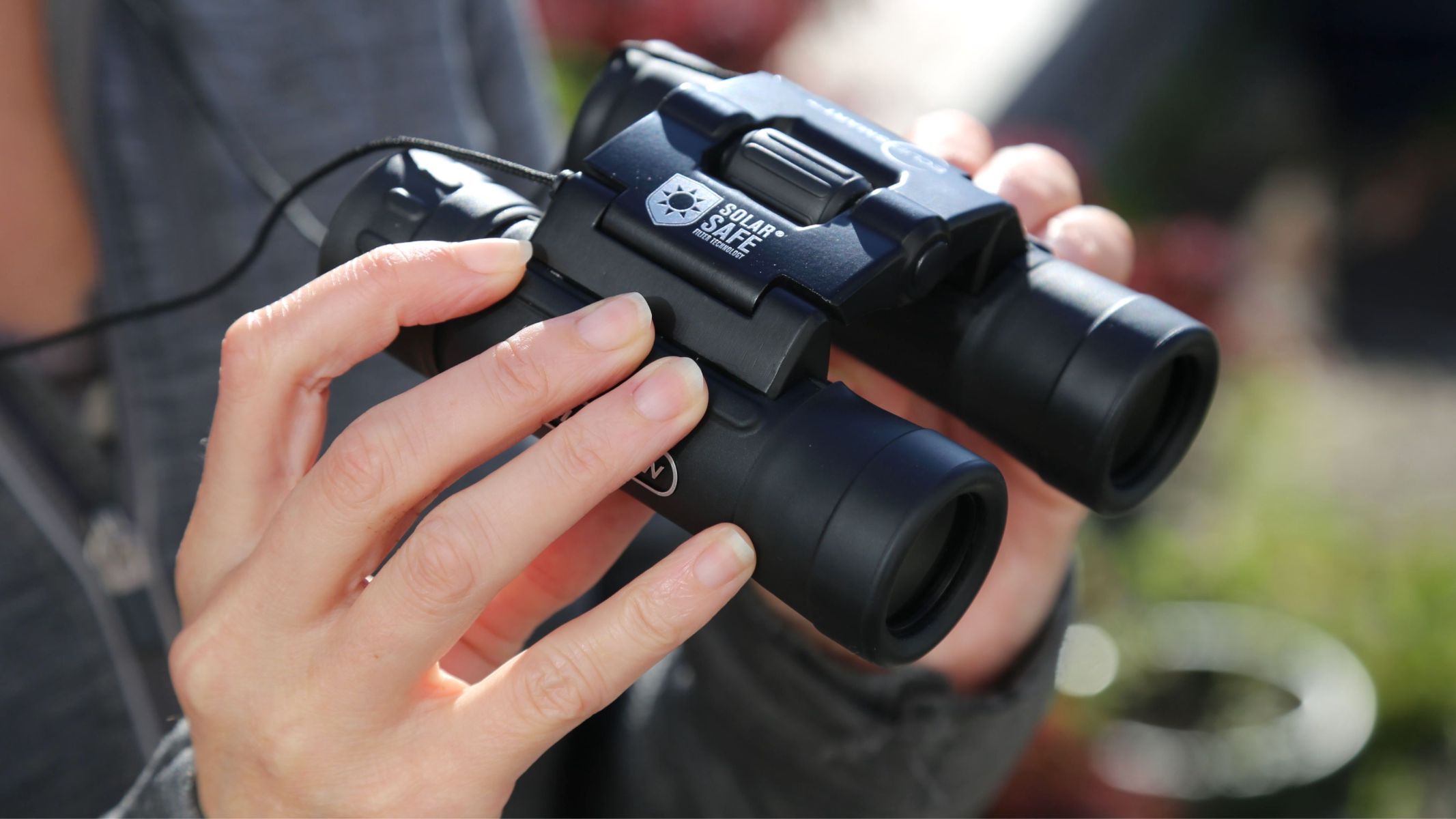
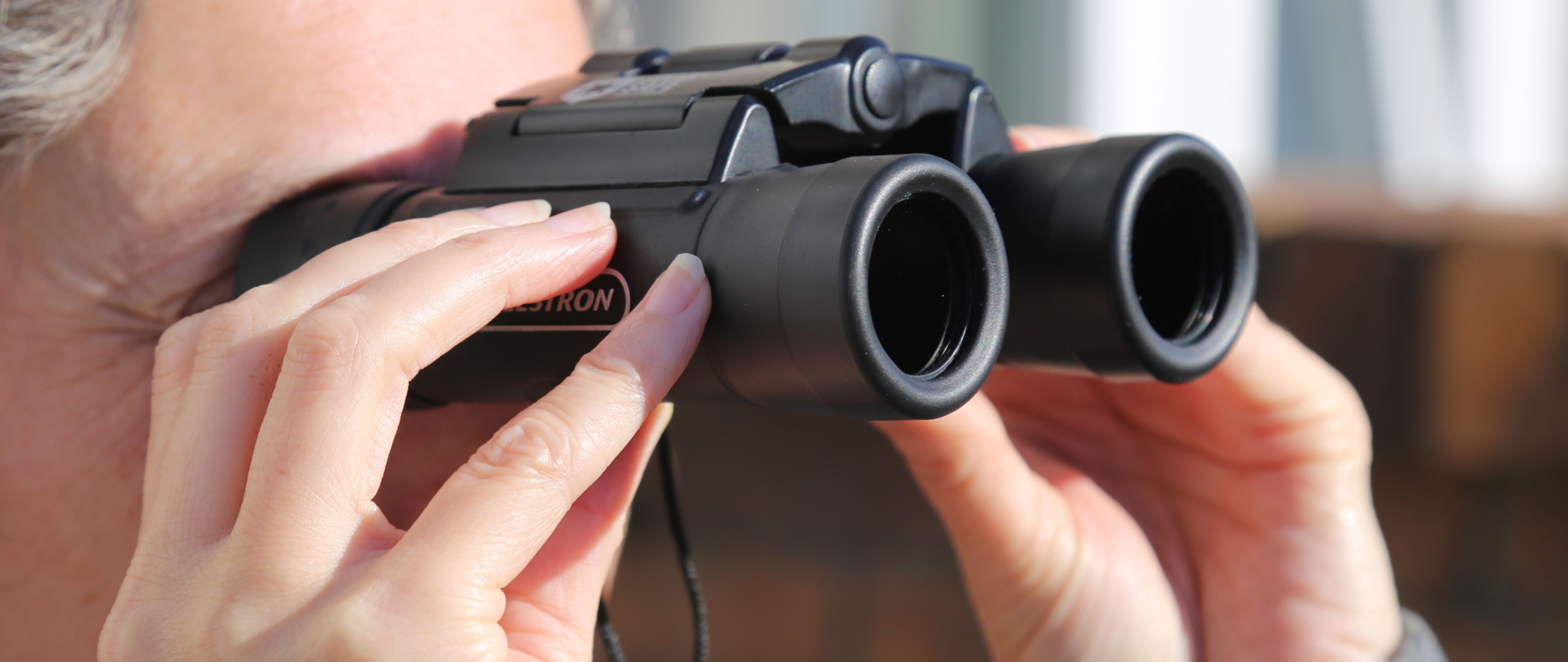
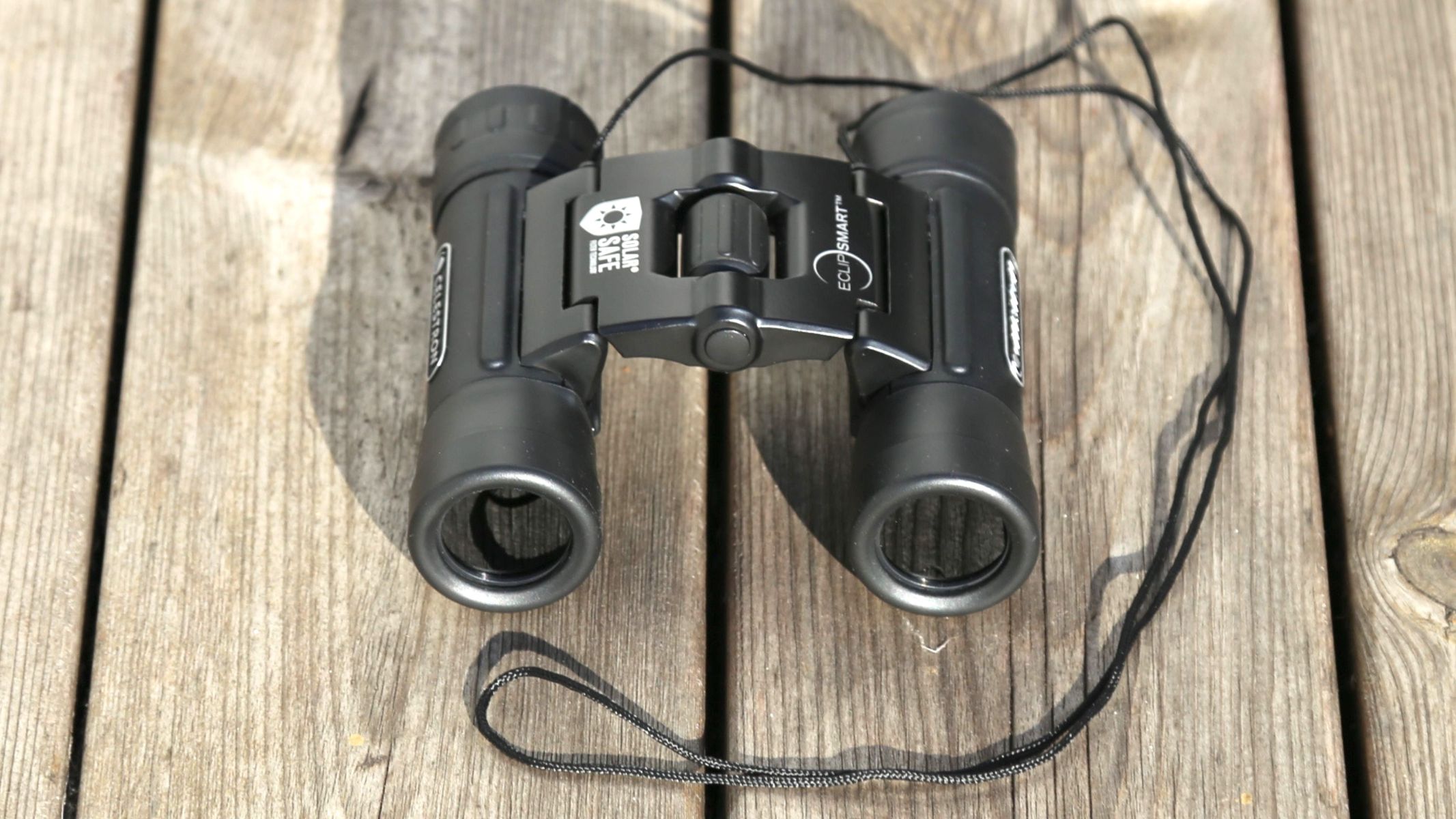
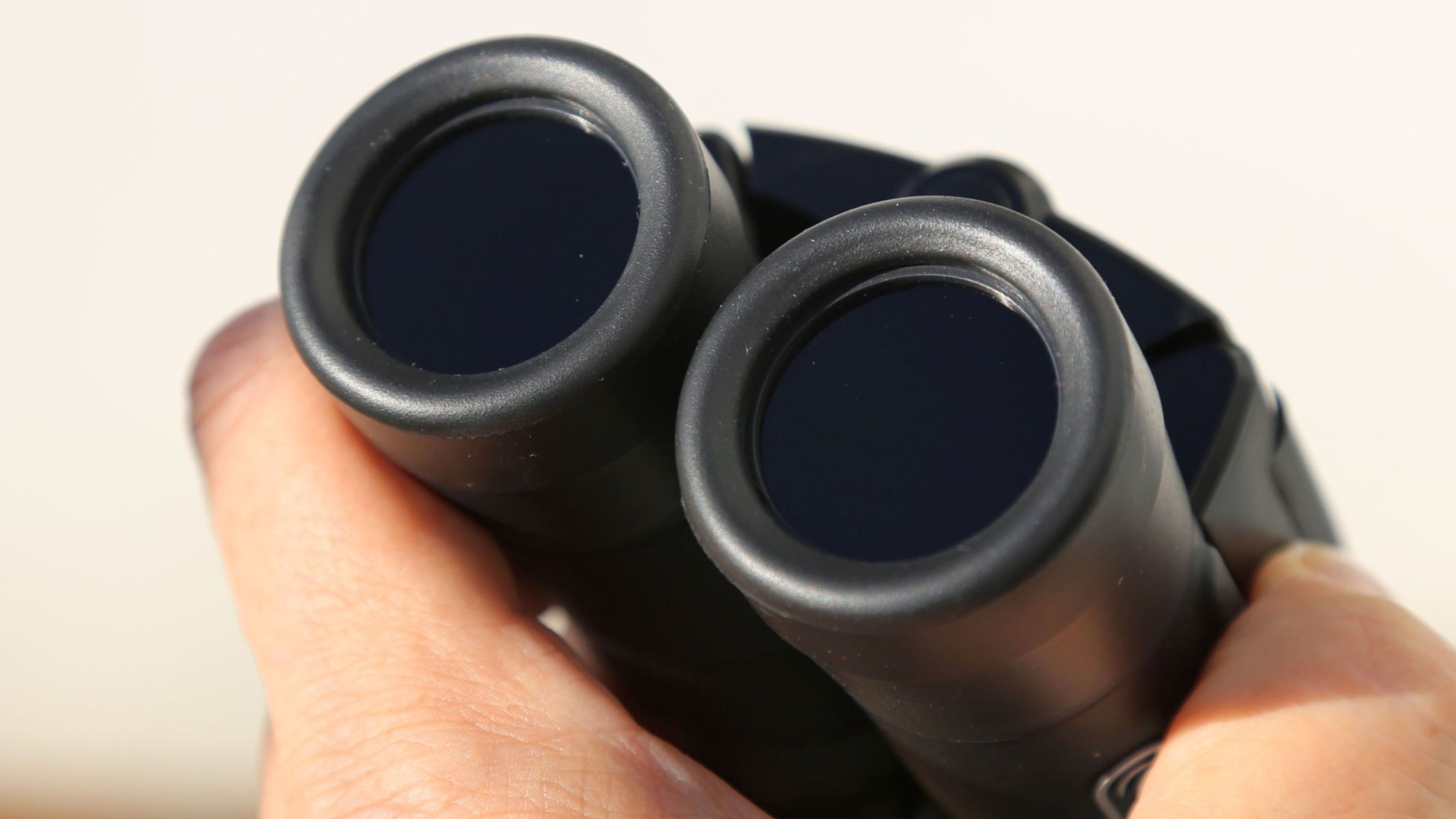
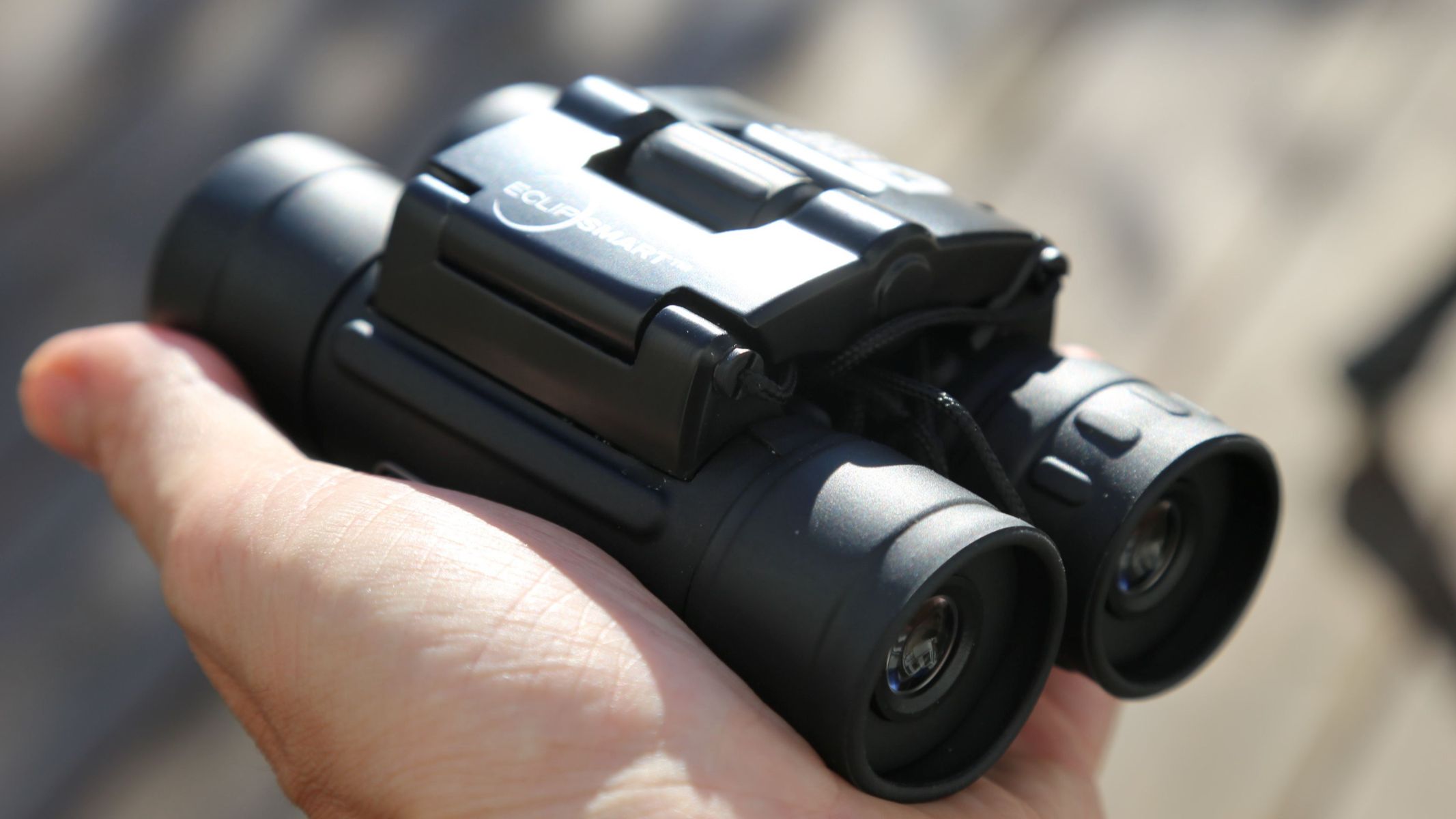
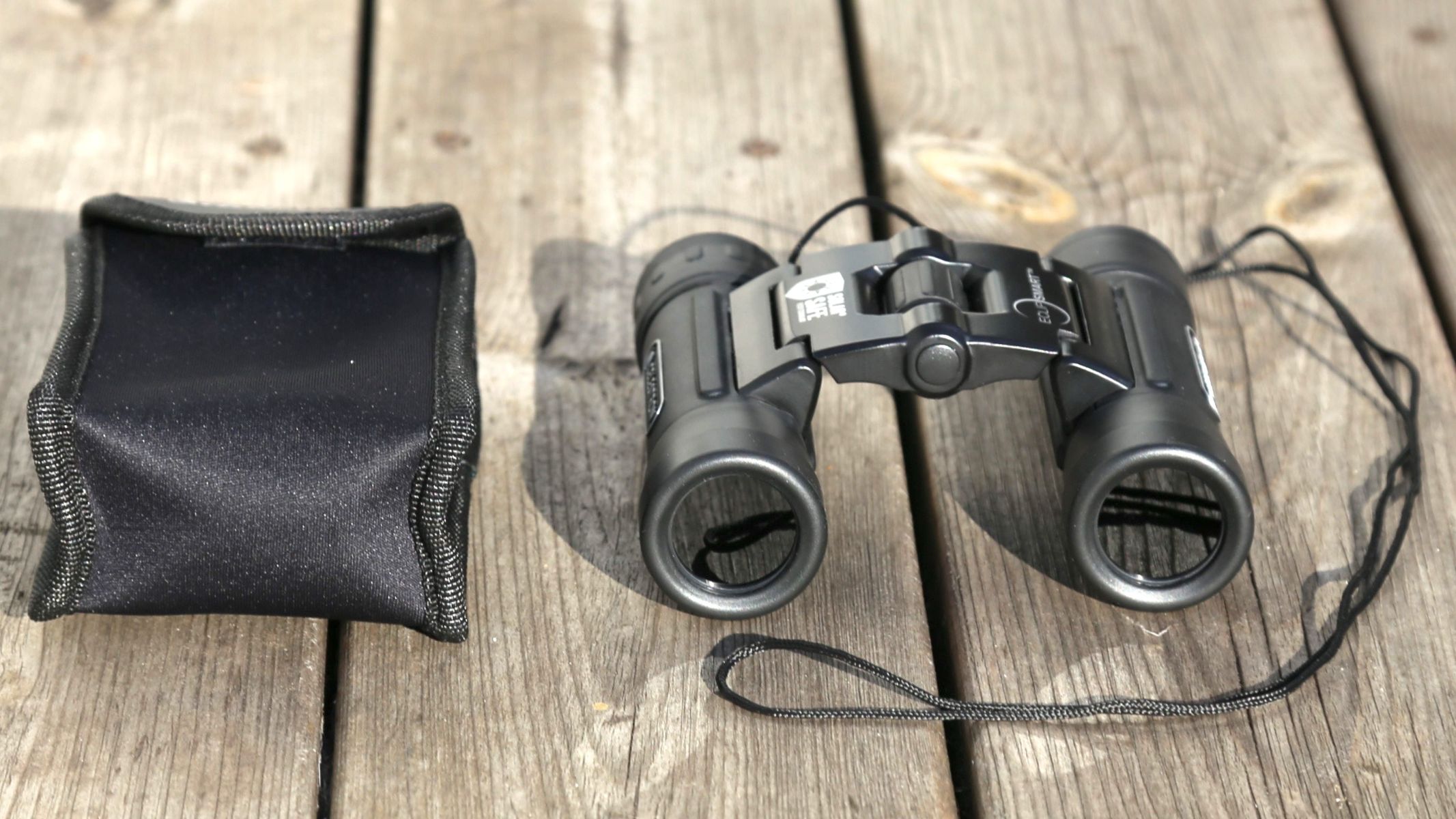
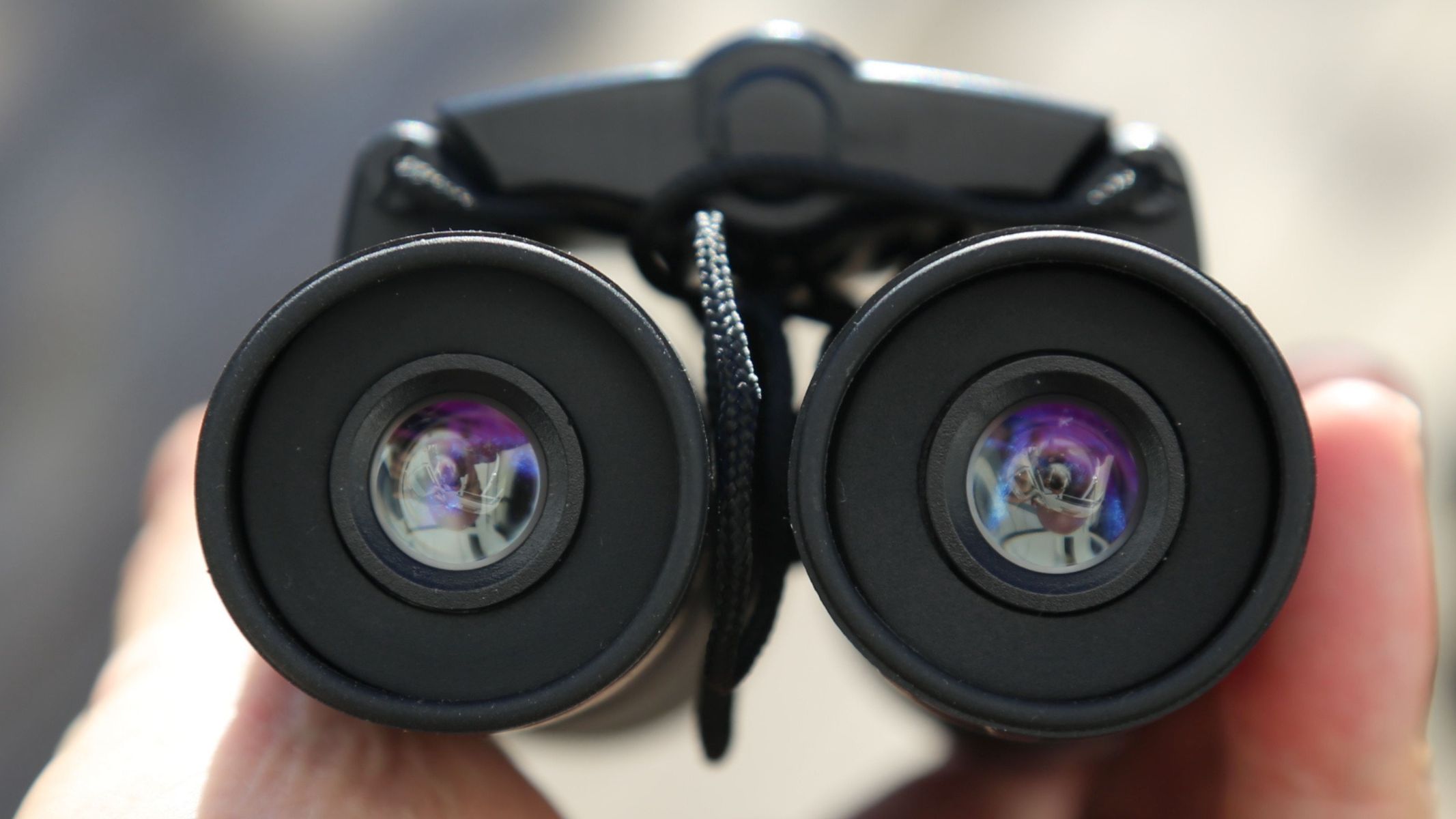
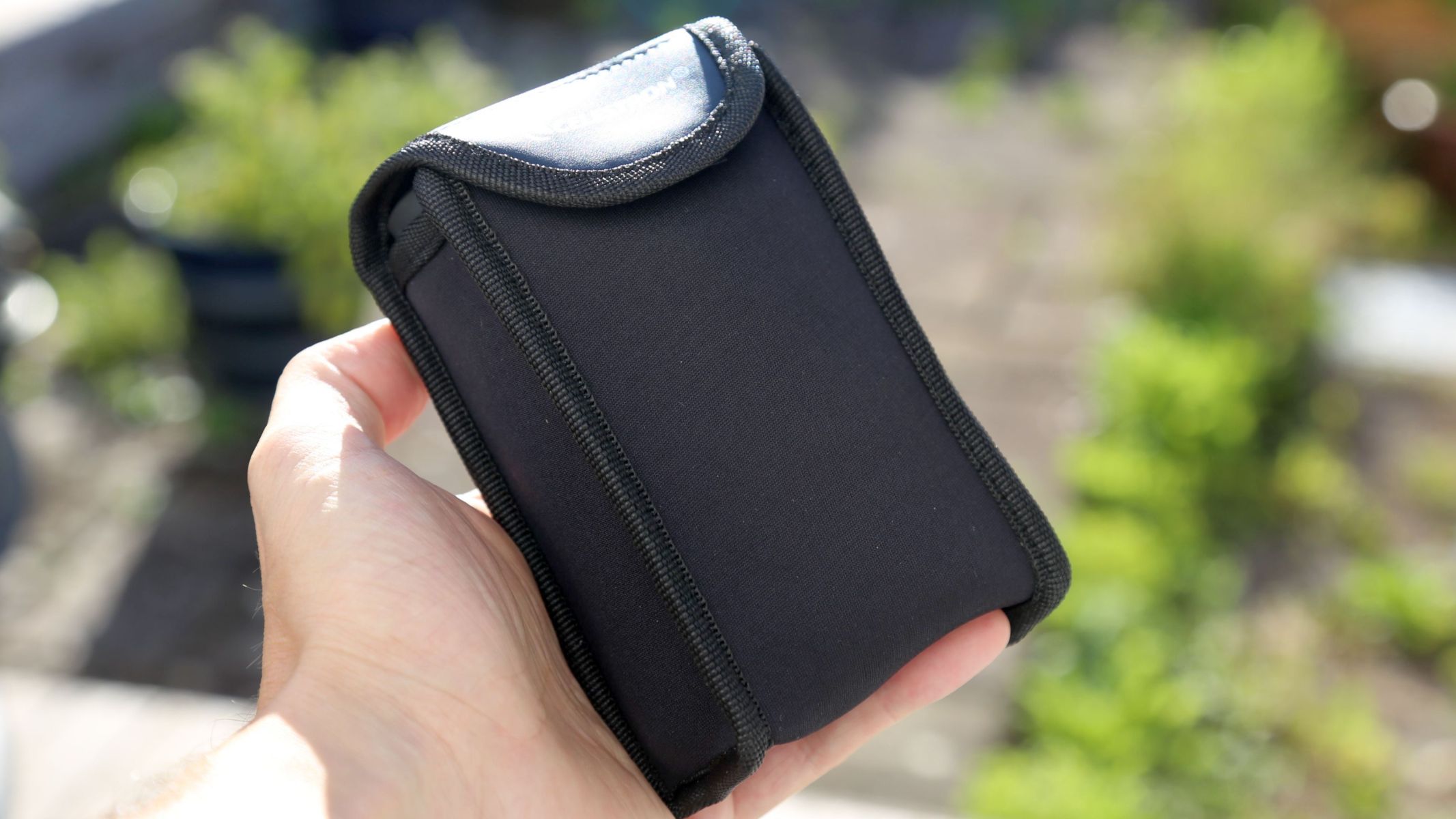
Specifications
Reasons to buy
Reasons to avoid
✅ You don't want to break the bank: These are an affordable way to track the eclipse, giving better views than you'd get from a pair of solar glasses.
✅ You want something small and portable: These binos are ideal to pop into your pocket if you're viewing the eclipse while traveling or on the go.
❌ You have large hands: These binoculars are very small and users with large hands could find them fiddly to use.
❌ You want lots of detail: Optically, they're not amazing. They're fine for getting a closer look at the sun, but opt for a different pair if you want lots of detail.
🔎 Affordable and easy to use, the Celestron EclipSmart 10x25mm solar binoculars are a step up from solar eclipse glasses yet almost as compact. ★★★★
Ever bought a pair of cardboard solar eclipse glasses, only for them to get lost or bent between one solar eclipse and the next? Well, if you're looking for something more durable that will last you through all the solar eclipses of the next few years, these Celestron EclipSmart 10x25mm solar binoculars could be the ideal solution for you.
They feature permanently attached solar filters on their 25mm objective lenses that meet the all-important ISO 12312-2 safety standard, so you can rest assured that they will protect your eyes from any harmful solar rays. Their 10x magnification offers a useful balance for solar viewing. They magnify the image enough for you to be able to spot larger sunspots (something you can try even when there isn't an eclipse), but they're not so highly magnified as to make it difficult to locate the sun when you need to.
In our Celestron EclipSmart 10x25mm solar binocular review, we enjoyed the lightweight feel of these binoculars, which weigh about the same as a smartphone. They come with a basic neck strap (just a cord), which is handy when you're using them during long solar eclipses, and they also come with a neoprene carry case, belt loop and cleaning cloth.
We would have liked to have seen some lens caps included, and the short eye relief isn't ideal for glasses-wearers, but as a standby pair for solar eclipse viewing, they're a robust and affordable package. Right now, Amazon has a cracking deal on these binoculars, so grab them while you can!
- Read our full Celestron EclipSmart 10x25mm solar binoculars review
Attributes | Notes |
|---|---|
Design | Lightweight and pocket friendly. |
Performance | Image lacks brightness compared to premium binos. |
Functionality | Easy to hold and use. |
Celestron EclipSmart 12x50 Solar Binoculars
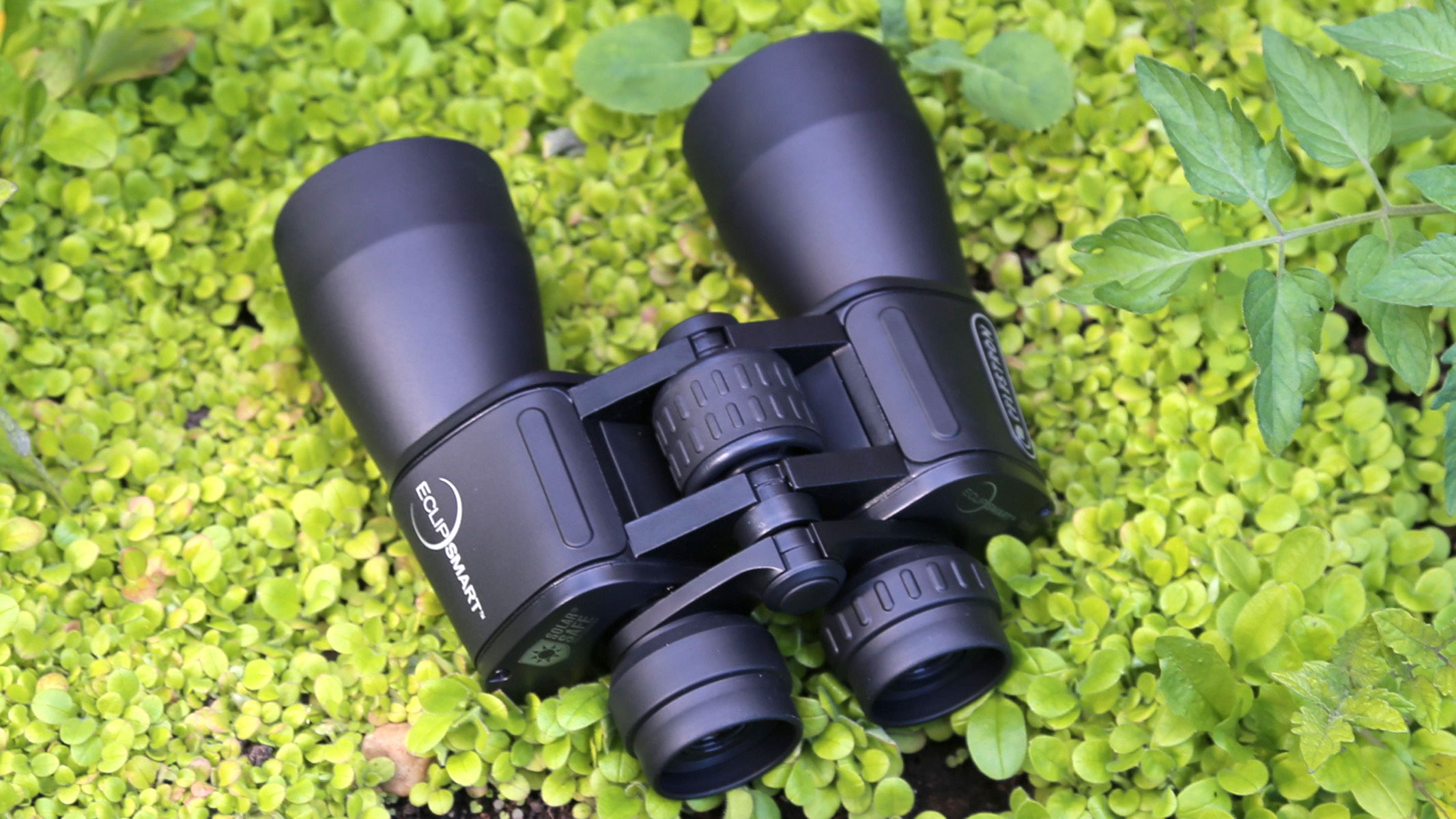


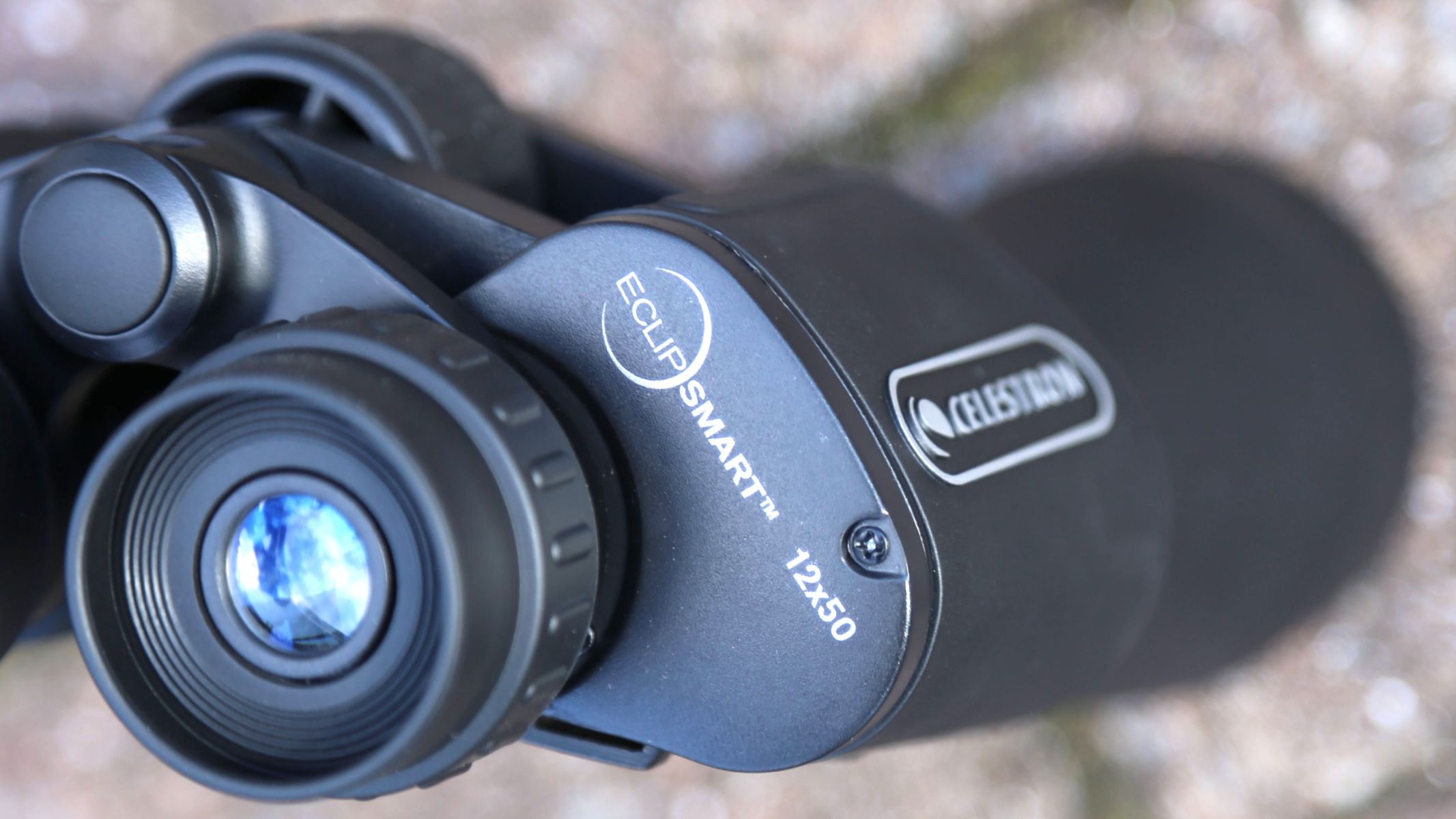
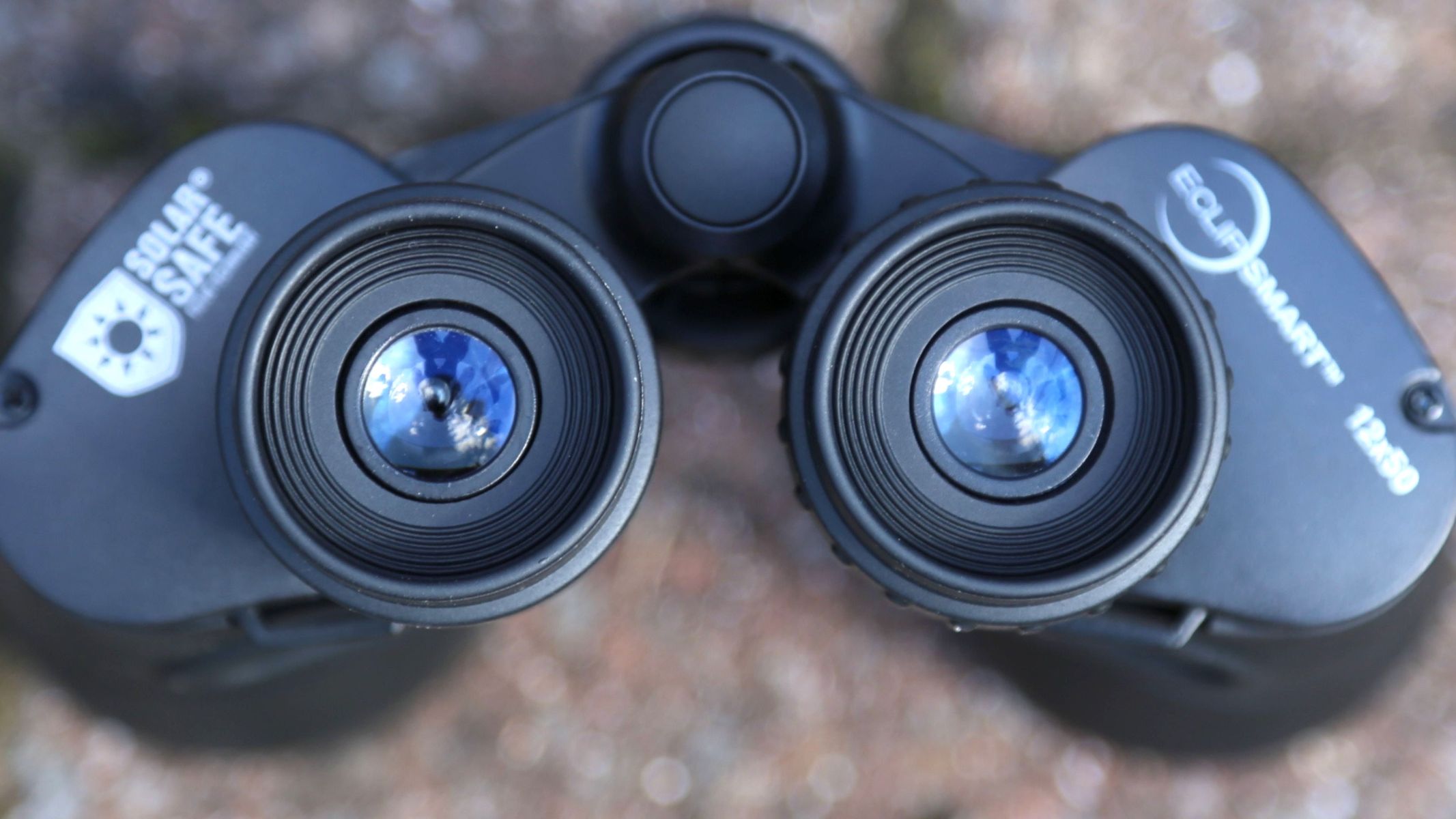

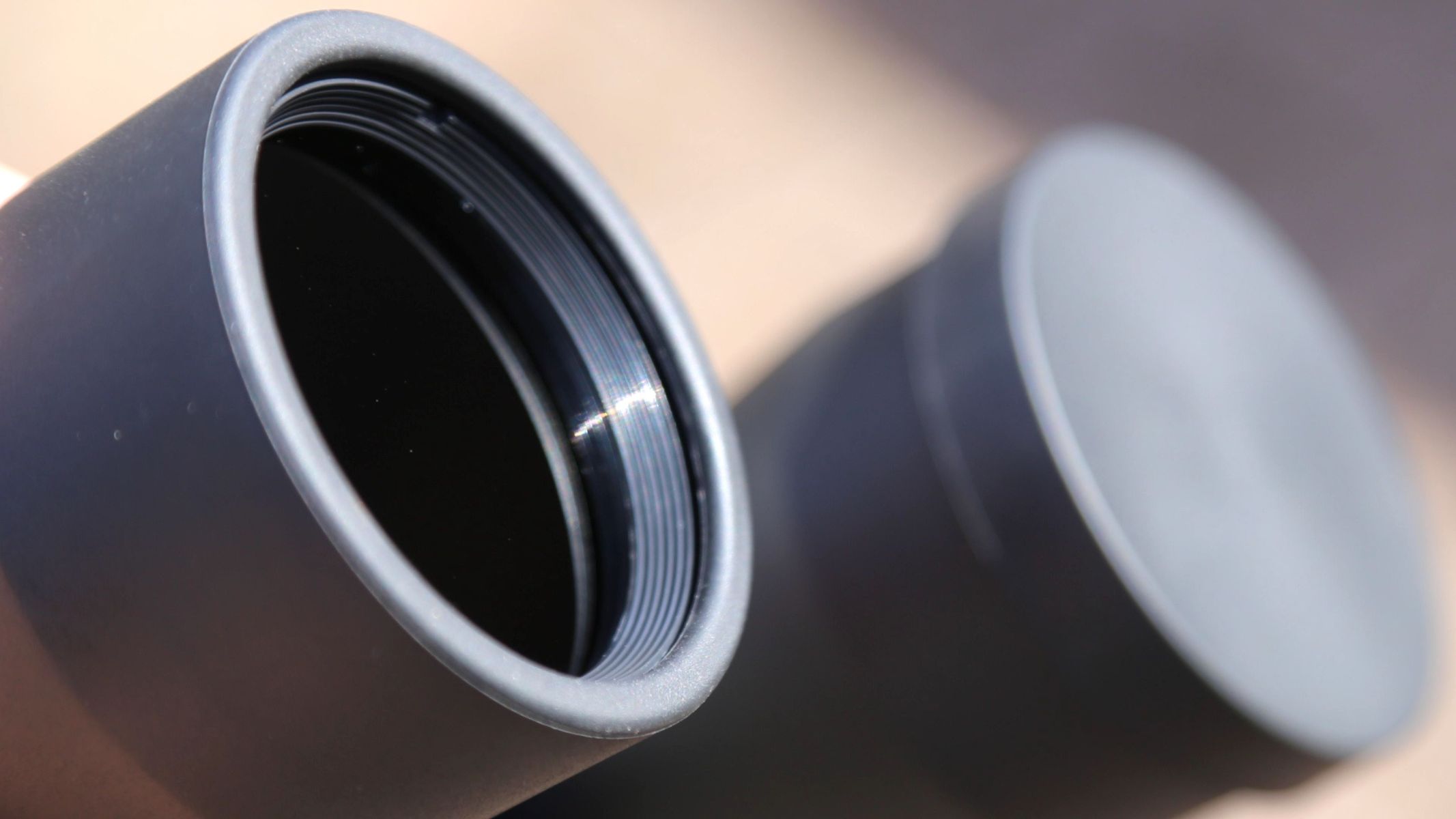
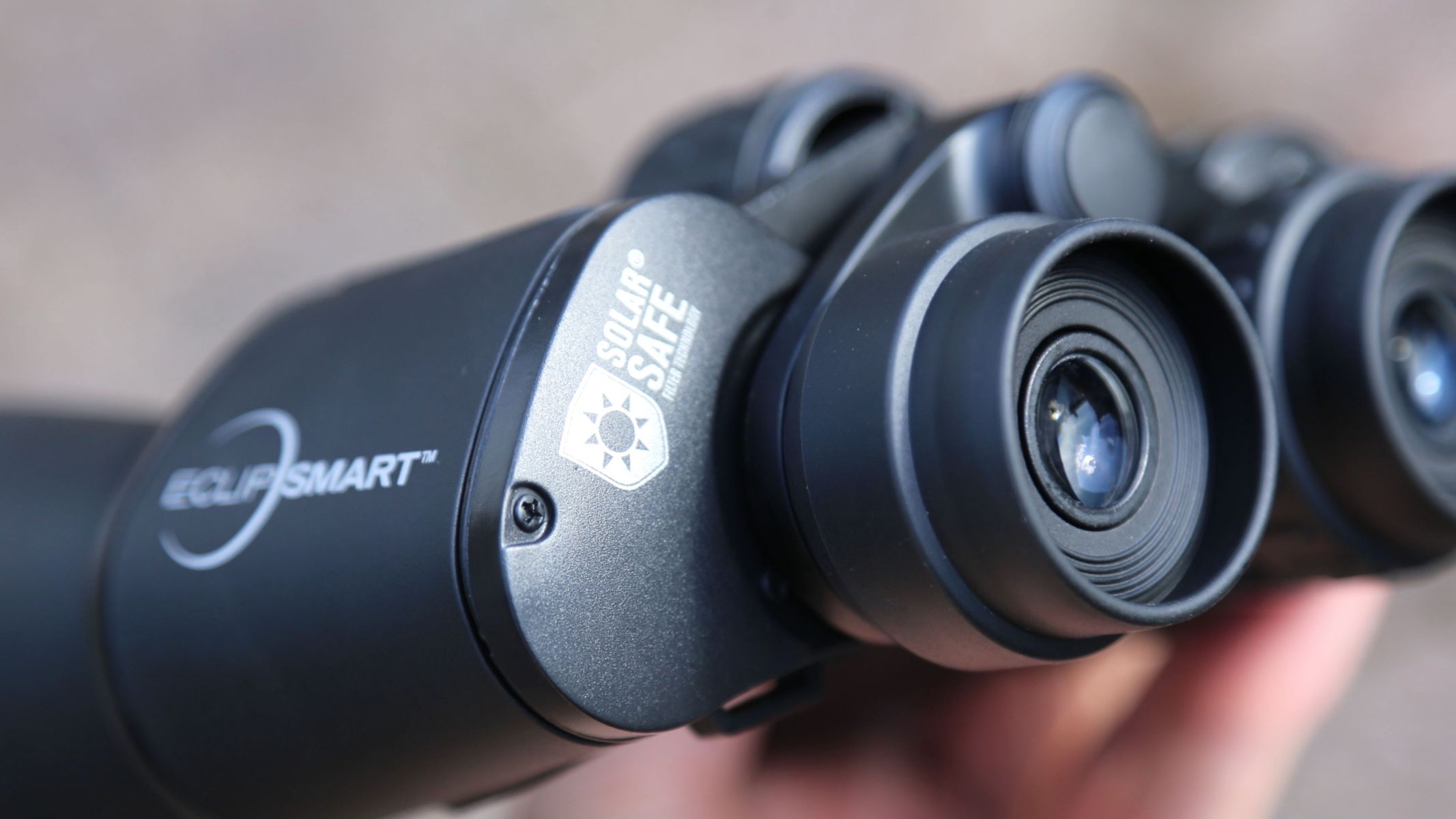

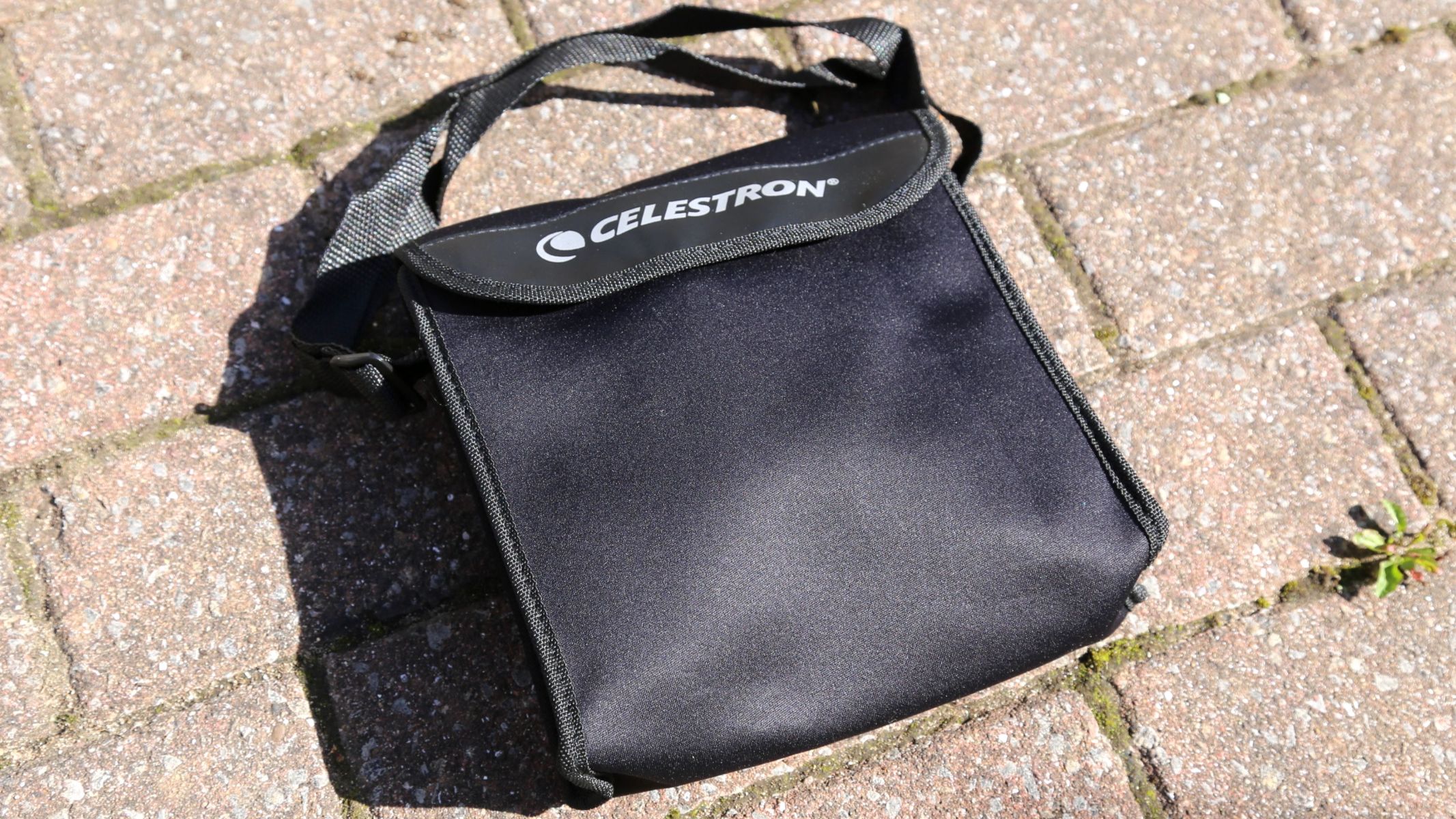
Specifications
Reasons to buy
Reasons to avoid
✅ You want close-up views: These binos have 12x magnification to give great close-up views of eclipses and sunspots.
✅ You want a specialist pair: These binos are designed for solar viewing and are considered the best by many eclipse-chasers.
❌ You want something small and lightweight: They are on the big and bulky side, and the only way to eliminate the weight is to mount them on a tripod.
❌ You don't want to use a tripod: You don't have to use a tripod, but we'd recommend it as they're heavy and the higher magnification can make them wobbly to use.
🔎 Celestron EclipSmart 12x50mm Porro are specialist solar eclipse binoculars that offer a great close-up view of sunspots. However, their bulky size means they require a little patience, practice and preparation. They're a wise choice if you're after something serious that will last beyond the next eclipse. ★★★★
If the 10x25's we mentioned above didn't hit the spot, these Celestron EclipSmart 12x50 Porro Solar Binoculars are bigger, give better views and are considered the best by eclipse-chasers. As expected, they're fitted with polymer glass solar filters on the objective lenses that meet the ISO 12312-2:2015(E) international safety standard. In our full Celestron EclipSmart 12x50 Porro Solar Binocular review, we noted that the lens caps were easy to lose because they weren't attached, and the neck strap was a little slim, but these were only minor complaints.
While testing them out for our review, we saw very detailed close-ups of sunspots peppering the sun's surface. We did observe a small amount of color fringing, but it was neither distracting nor totally unexpected with solar binoculars.
It is worth noting that these binoculars are quite heavy and bulky, so we think they're at their best when paired with one of the best tripods. This is a common challenge found in binoculars with magnification over 10x, so it's best to either sit down when using them or mount them on a tripod to keep them steady and avoid armache (especially when you consider that most solar eclipses last over three hours). Luckily, they come with a tripod adapter jack between the barrels.
Another issue you might run into with the higher magnification is actually finding the sun when you look through them (which may not be as easy as you'd think). For this reason, these binos do require a bit of patience and practice.
- Read our full Celestron EclipSmart 12x50 Porro Solar Binocular review
Attributes | Notes |
|---|---|
Design | Big and bulky. |
Performance | Give detailed views of sunspots. |
Functionality | Includes a tripod adapter jack for stability. |
Solar Filters
Baader Planetarium AstroSolar Binocular Filter
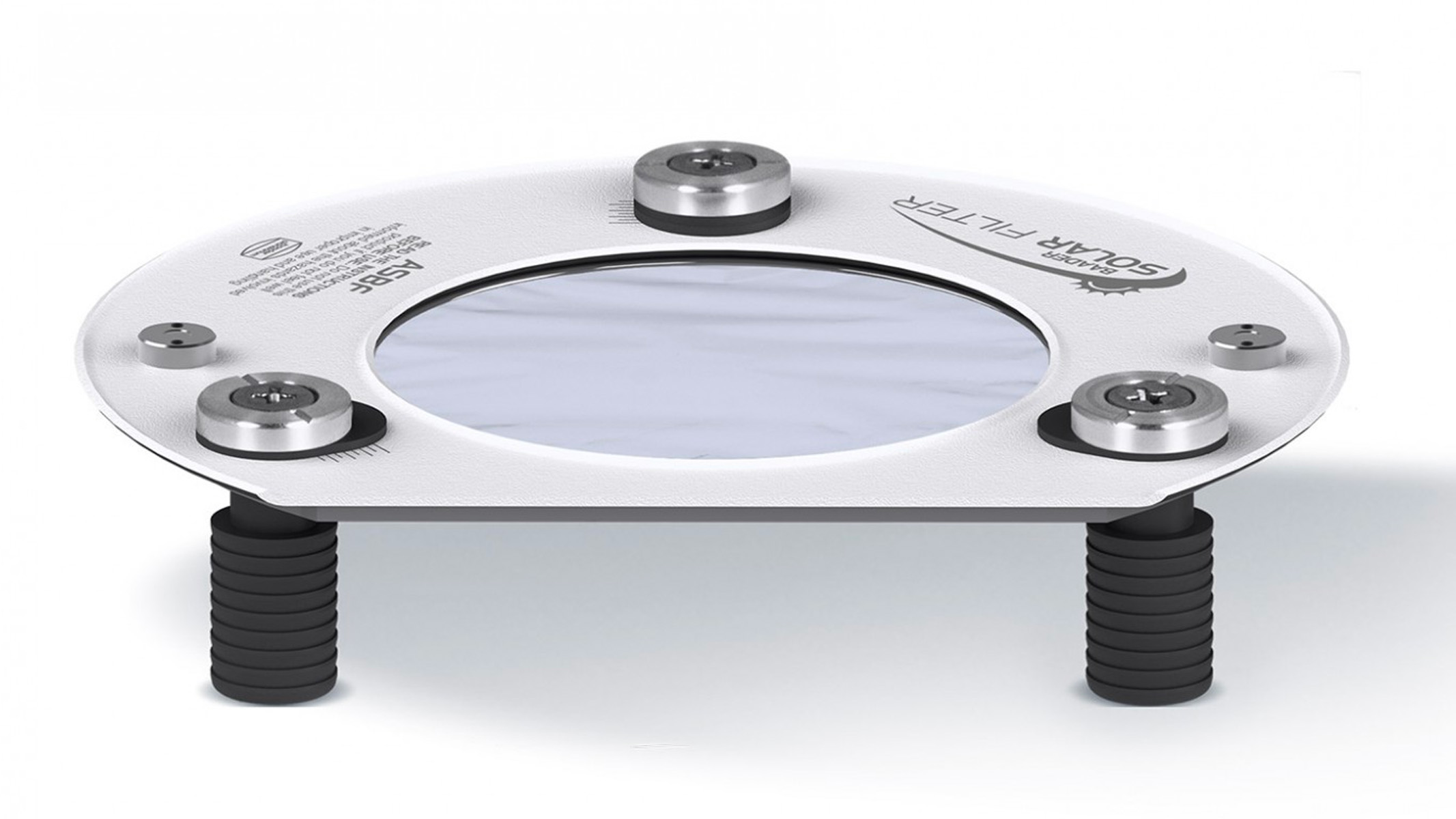
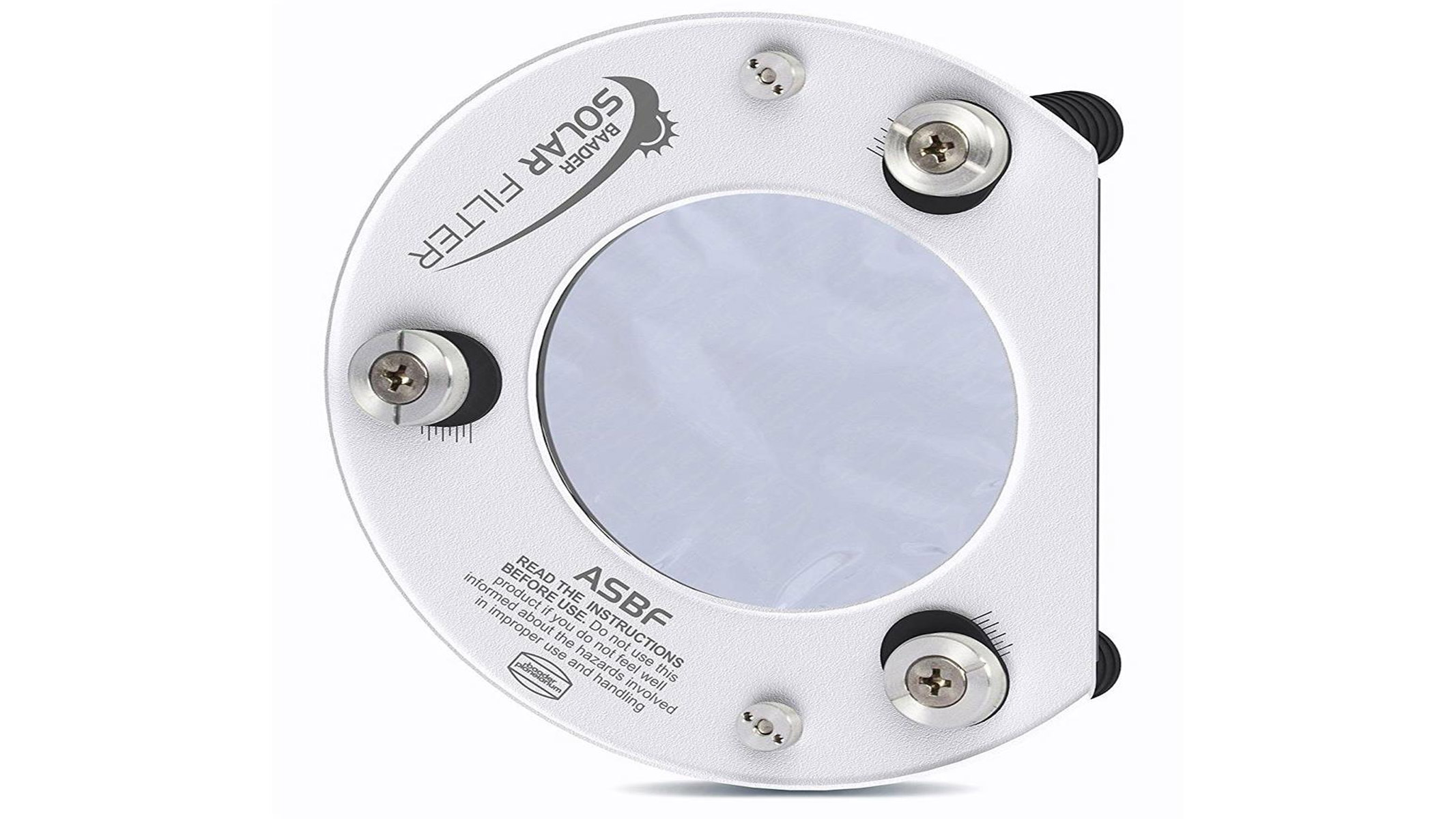
Baader Planetarium AstroSolar Binocular Filter
Our expert review:
Specifications
Reasons to buy
Reasons to avoid
✅ You already own good binoculars: Rather than buying a separate pair for solely solar use, these filters add versatility to your current binos.
✅ You don't want to break the bank: These sit middle of the table in terms of price — we think they're good value for money.
❌ You want a pair: You need to buy two filters to use on binoculars, which bumps the cost up.
❌ You want something smaller: If you're looking for a thinner screw-on filter akin to camera lens filters, there are other options.
🔎 Baader Planetarium AstroSolar Binocular Filter: This filter is well-built, easy to use and affordable. It's marketed as a binocular filter, but can also be used on camera lenses, monoculars and spotting scopes, too. ★★★★
If you already own a good pair of binoculars and don't want to shell out for a separate pair of solar binoculars, you may want to consider a solar filter. The Baader Planetarium binocular filter is a white light filter designed to clamp onto binoculars for safe solar viewing.
Baader Solar Filters offer a reliable way to observe and capture images of the sun safely using AstroSolar Safety Film OD 5.0. Unlike some ready-made filters that stretch the film like a drumhead, which ruins image quality, Baader's filters maintain clarity, making them ideal for high-magnification observations.
The filter includes all the mounting accessories — centering bolts, sliding washers, fasteners and safety straps, and the filter comes in different sizes — 50mm, 60mm, 70mm, 80mm and 100mm, although many retailers tend to offer the 50mm as standard.
They're easy to install and remove and well-built. The adjustable 'feet' make it easy to adapt them to various lens sizes. However, some users have stated that they don't fit back in the box once they're assembled, so we think including a separate storage box would've been a nice touch.
One thing worth noting is that these filters are sold individually. OK if you're going to be using it on a monocular, spotting scope or camera that only has one attached lens, but if you plan on using it on a pair of the best binoculars, you'll need to buy two.
It's important to note that you should never use this Baader filter with a camera equipped with an optical viewfinder. You'll be fine to use it with any of the best mirrorless cameras, but do check whether your DSLR has an optical or electronic viewfinder.
Attributes | Notes |
|---|---|
Design | Well built, but some users may not like the velcro fastenings. |
Performance | Easy to use and give great views. |
Functionality | Need to be assembled and can adjust to different size lenses. |
Celestron EclipSmart Safe Solar Eclipse Filter
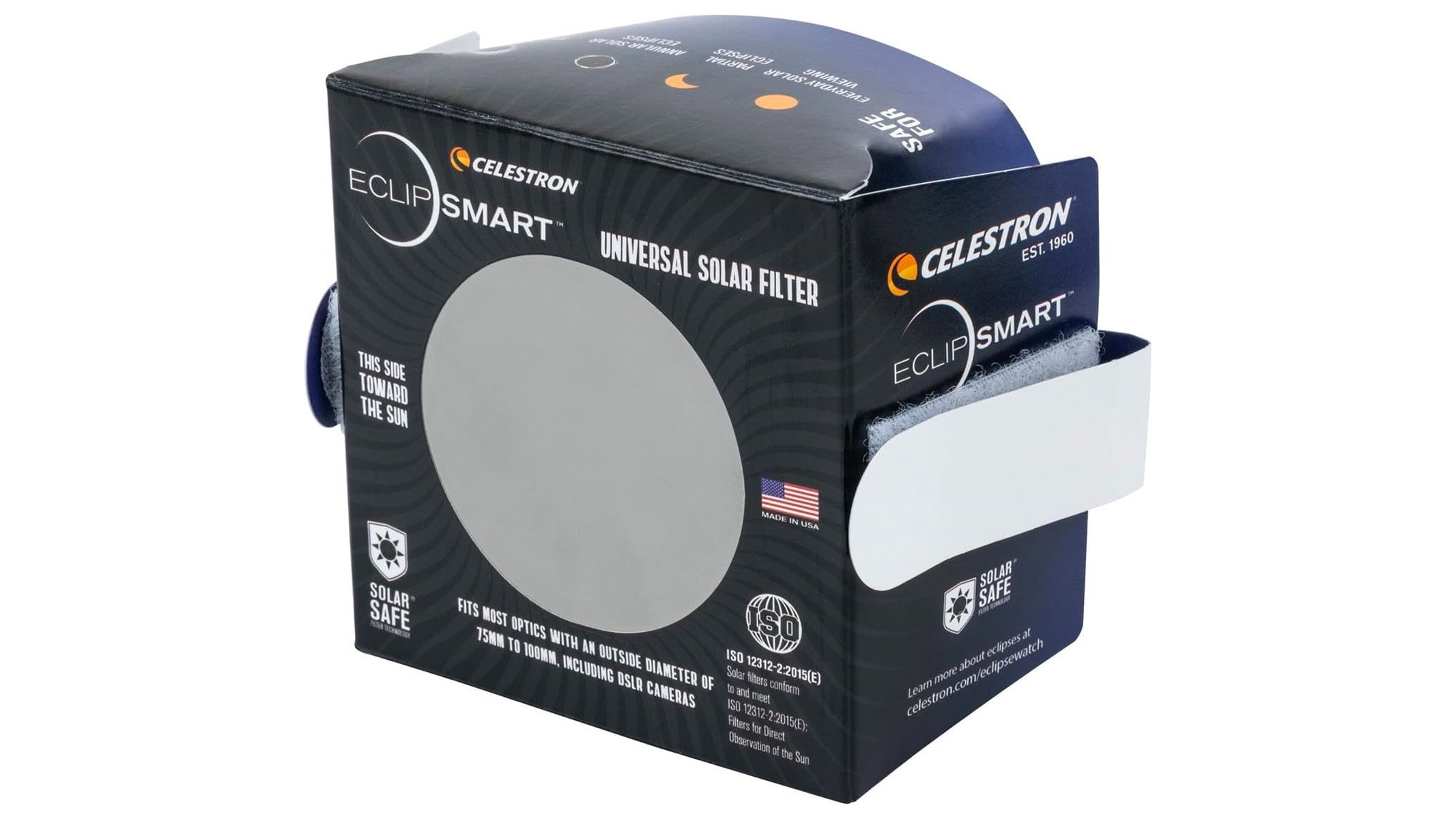
Celestron EclipSmart Safe Solar Eclipse Filter
Our expert review:
Specifications
Reasons to buy
Reasons to avoid
✅ You don't want to buy a separate solar scope: If you already have a good telescope, this is a more cost-effective option than buying a whole new solar scope.
✅ You don't want to spend a lot: This filter is very affordable.
❌ Your camera has an optical viewfinder: If you have a DSLR camera with an optical viewfinder, you should NOT use this filter to view the sun.
❌ You want to use it regularly: With proper care, it can last you a few uses, but the card construction won't last forever.
🔎 Celestron EclipSmart Safe Solar Eclipse Filter: An affordable and incredibly easy to use solar filter that clips onto the front of your camera, telescope or spotting scope. We rate Celestron highly, so you can expect good quality here. ★★★½
If you already own one of the best telescopes, you may want to opt for a filter as opposed to buying a whole new solar telescope just to see solar events. The Celestron EclipSmart Safe Solar Eclipse Filter securely attaches to the front of your telescope, spotting scope or camera. You just need to adjust the side panels to fit the filter to your telescope or camera and attach the elastic band to secure it. Then, after you've finished observing, you can fold the filter flat and store it in the reusable bag that comes with it (don't get your hopes it; it's just a see-through plastic pouch). It also comes with a 2-year warranty.
It's compatible with objective lenses with an outside diameter of 75mm to 100mm and is made to accommodate housings, sunshades and dew shields. It conforms to the ISO 12312-2:2015(E) international safety standard for filters directly viewing the Sun, blocking 99.999% of intense light and all harmful IR and UV radiation, so you can rest assured that you won't damage your eyes or your equipment.
As opposed to the Baader white light filter we mentioned above, the Celestron EclipSmart Safe Solar Eclipse Filter has an orange tint to produce a natural look. And it's not just good for viewing the solar eclipse, you can use it to observe the sun on any day at any time. Although, as it's made from card stock (with the filter in the middle), it's not going to last forever. If you want something for regular use, check out the next option on this list.
It's important to note that you should never use this Celestron filter with a camera that is equipped with an optical viewfinder. You'll be fine to use it with any of the best mirrorless cameras, but do check whether your DSLR has an optical or electronic viewfinder.
Attributes | Notes |
|---|---|
Design | Made from card stock. |
Performance | Easy to use. |
Functionality | Universal fit and compatible with objective lenses with an outside diameter of 75mm - 100mm. |
Hoya Pro ND-100000 Solar Filter
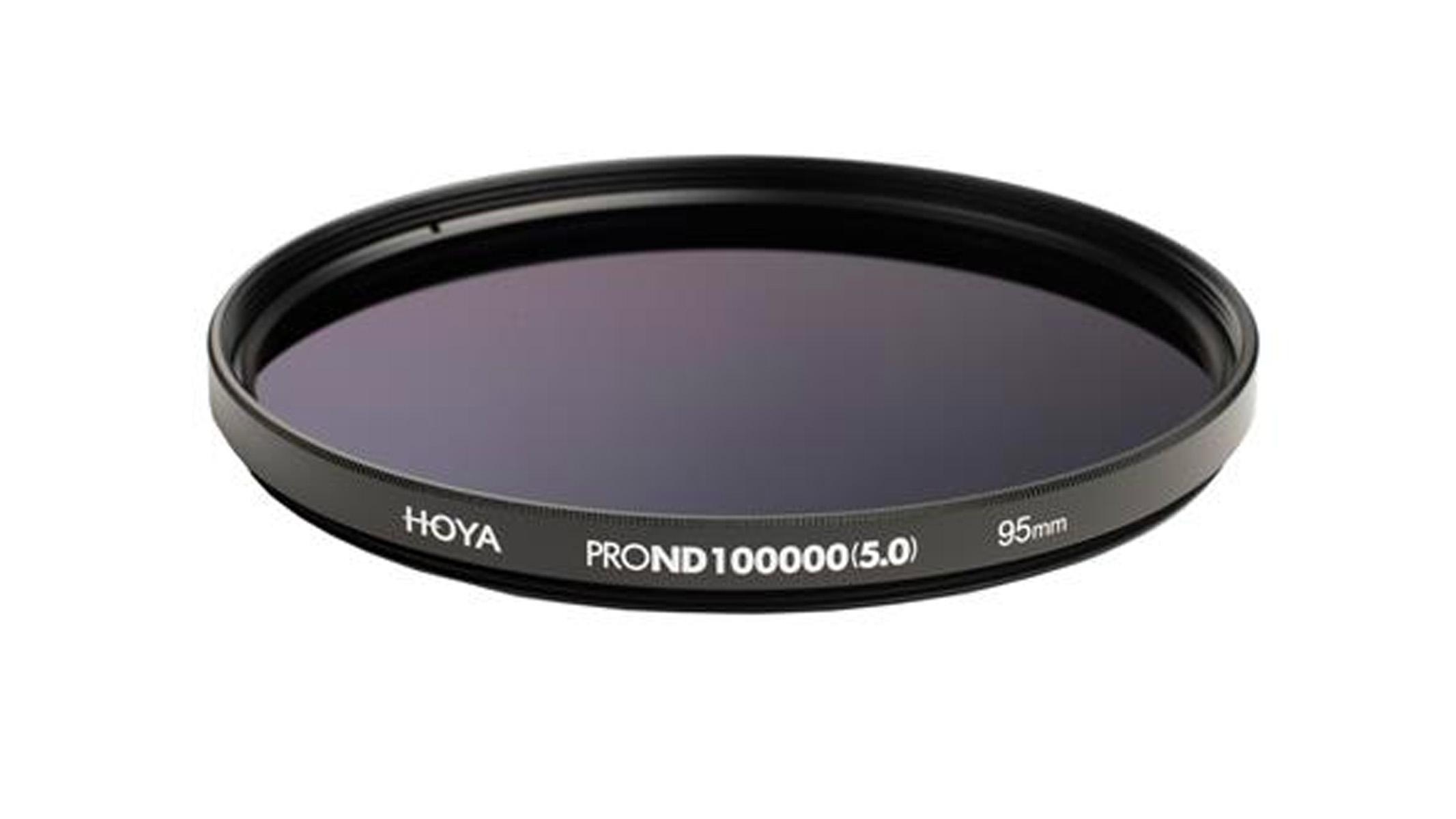
Hoya Pro ND-100000 Solar Filter
Our expert review:
Specifications
Reasons to buy
Reasons to avoid
✅ You plan on doing a lot of solar photography: These filters are built to last, so they're excellent for regular use.
✅ You can afford to: They're on the premium end of the spectrum, but they'll last you for a long time if you can afford to invest in one.
❌ You're on a budget: These filters are not cheap, especially if you have multiple lenses with different filter thread sizes and want one solar filter for each lens.
❌ You want to use it on binoculars: These filters are designed for camera lenses and telescopes.
🔎 Hoya Pro ND 100000 Pro Solar Filter: A premium solar filter designed specifically for solar photography, it only lets through 1/100,000 of the light, making it ideal for photographing solar eclipses. ★★★★
Photographers will be familiar with Neutral Density (ND) filters for long exposure daytime photography, and even though you may think these filters would be suitable for solar viewing, they do not block out the harmful radiation that can cause permanent eye damage.
To solve this issue, this Hoya Pro ND 100000 Pro Solar Filter is specifically designed for solar photography. This ultra-dark filter has a filter factor of 100,000, which means it only lets through 1/100,000 of the light that enters it. This results in a light reduction of just over 16.5 stops. Such extreme darkness is needed because of the sun's intense brightness, even during a solar eclipse. Keep in mind that they don't claim this filter can block out any harmful UV or IR rays from the sun, so you mustn't look directly at the sun through the filter.
The special multi-coating process provides neutral colors and sharp results, and this filter allows for exposures longer than one hour in direct sunlight (just be careful not to damage your camera's sensor). It is also suitable for use on telescopes, so make sure it fits your particular scope before you purchase one.
As we mentioned above, it's important to note that you should never use this Hoya filter with a camera that is equipped with an optical viewfinder though you'll be fine to use it with any of the best mirrorless cameras. This filter is also not suitable for eye protection for extended views of the sun or solar eclipses.
Attributes | Notes |
|---|---|
Design | Multi coated glass filter. |
Performance | Only lets in 1/100,000 of the light through the lens. |
Functionality | Doesn't block harmful rays, so should not be looked directly through. |
Best solar viewing equipment FAQs
What type of telescope is best for solar viewing?
In general, neither refractor nor reflector telescopes are inherently better for solar viewing; it depends on how they are equipped and the safety measures are taken. However, certain considerations make refractor telescopes more popular for solar observation among some enthusiasts.
Refractor telescopes have a closed optical tube, which reduces the chances of stray light entering the telescope. This can be advantageous for solar viewing as it minimizes the risk of unwanted light interfering with the observation. It's also often easier to attach solar filters directly to the front end of a refractor telescope. Refractors lack a central obstruction, which can provide slightly higher contrast and image quality for certain solar features.
That being said, many reflector telescopes are also used for solar observation successfully. The key is to use the appropriate solar filters and safety measures, regardless of the telescope type.
How do I view the sun with a telescope?
There are two main ways to observe the surface of the Sun with a telescope. The first is by directly looking through the telescope, using a special solar filter that covers the front of the telescope. A solar filter will block most of the harmful ultraviolet, visible and infrared rays from the Sun — it also protects the telescope from heat. The second method involves projecting the unfiltered image of the sun onto a screen, which avoids the risk of accidentally looking directly at the sun through a telescope and has the advantage of allowing several observers to view the Sun at the same time.
What aperture telescope will I need?
You don't need much aperture. Whatever telescope an amateur astronomer already has will most likely work well — apertures in the range of 50-80 mm are sufficient.
What magnification do I need in a telescope or binoculars?
In good observing conditions, higher magnification helps reveal small spots and pores more clearly. However, there's a risk of mistakenly counting a pore as a spot. On the other hand, using medium to high magnifications is necessary to accurately distinguish between pores and sunspots. If the magnification is too low, it can be challenging to differentiate the features of pores and sunspots.
It's helpful to look at the Sun at different magnifications. Start with low power (40x-50x) and medium power (60x-70x) to see the whole Sun and spot major groups. If the conditions allow, switch to high power (80x-90x) to identify smaller groups, accurately count spots and distinguish between spots and pores.
To calculate magnification, divide the focal length of the objective by the focal length of the eyepiece.
How do I safely use a solar filter?
Make sure the instrument's opening is not facing the Sun when you take off the dust cover and put on the solar filter. Check the solar filter for any defects before attaching it. Remember to do this check before each time you use your chosen optical instrument for observing the Sun.
Start by checking the solar filter for cracks or chips in the reflective coating. Hold the filter up to the sun, making sure it's between your eyes and the sun. If you can see unfiltered sunlight through anything larger than a tiny pinprick, don't use the filter — it needs to be replaced.
Always make sure the filter is securely attached to the front of the instrument, and there's no chance of it coming off accidentally when aimed at the Sun.
How do I set up the projection screen for viewing on a telescope?
In general, a 6-inch (150mm) diameter image is considered the best balance between brightness and clarity. If the image is too large, it might be faint and lack contrast. On the other hand, if it's too small, it could be challenging to clearly see small spots.
A useful formula for calculating the distance (in mm) between the eyepiece and projection screen needed for an image of 150mm is:
Distance = f(16050/F + 1)
f = eyepiece focal length
F = telescope focal length (in mm)
Can I use a standard Neutral Density (ND) filter on my camera lens?
Regular neutral density filters aren't safe for observing a solar eclipse because they don't block the harmful radiation that can harm your eyes. Only certified solar filters are safe to use for viewing a solar eclipse.
How we test the best solar viewing equipment
Update log
Going forward this log will be used to record major updates to this page such as removal or addition of products, updates about celestial events and new technical information from our experts.
How we test the best solar viewing equipment
To guarantee you're getting honest, up-to-date recommendations on the best solar viewing equipment to buy here at Space.com we make sure to put every product through a rigorous review to fully test. We consider each product based on numerous aspects, from its construction and design, to how well it functions as an optical instrument and its performance in the field.
Our expert staff and knowledgeable freelance contributors thoroughly test each product. This ensures honest reviewing based on the price, category and intended use.
With complete editorial independence, Space.com are here to ensure you get the best buying advice, whether you should purchase an instrument or not, making our buying guides and reviews reliable and transparent.
If this guide has inspired you to invest in some astronomy gear, check out the best telescopes, best binoculars and best cameras to get you started.
Breaking space news, the latest updates on rocket launches, skywatching events and more!

Kimberley Lane is a landscape & seascape photographer living in South Wales. Originally using photography as a way to cope with health issues, she aims to portray a feeling of calm and peace through her images. Her work has been featured in a number of national photography magazines.
- Chris McMullenContributing Writer
- Alexander CoxE-commerce Staff Writer
- Harry BennettE-commerce Staff Writer
